Rückenfiguren, 2024-ongoing
The images in the Rückenfiguren series were obtained by re-training generative AI models with scanned and digitalised photographs taken from the artist's family albums. Assuming signs of time such as scratches and dust, as well as the imperfections of amateur analogue photography, as semantic elements of their own language, the new generative models yield a peculiar aesthetic, a hybrid between the encyclopaedic visual knowledge - present in the initial model - and a circumscribed, emotionally dense visual paradigm. The series takes up from Romanticism the motif of the Rückenfigur, a figure seen from behind and turned towards a mysterious elsewhere, and unattainable themselves. The portraits as Rückenfigur play on this limit between recognisability and unrecognisability of the subject, on the gap between a data-grounded statistical elaboration and an arbitrary imaginative act.
Exhibitions:
2024 Remote, NUB Project Space, Pistoia, curated by Condylura
Press:
Juliet
Pictures:
1-5 Portrait of the mother as a Rückenfigur, 2024, inkjet print on cotton paper, 60x120cm, installation views at Remote, NUB Project Space, Pistoia
Ph: Francesca Lenzi
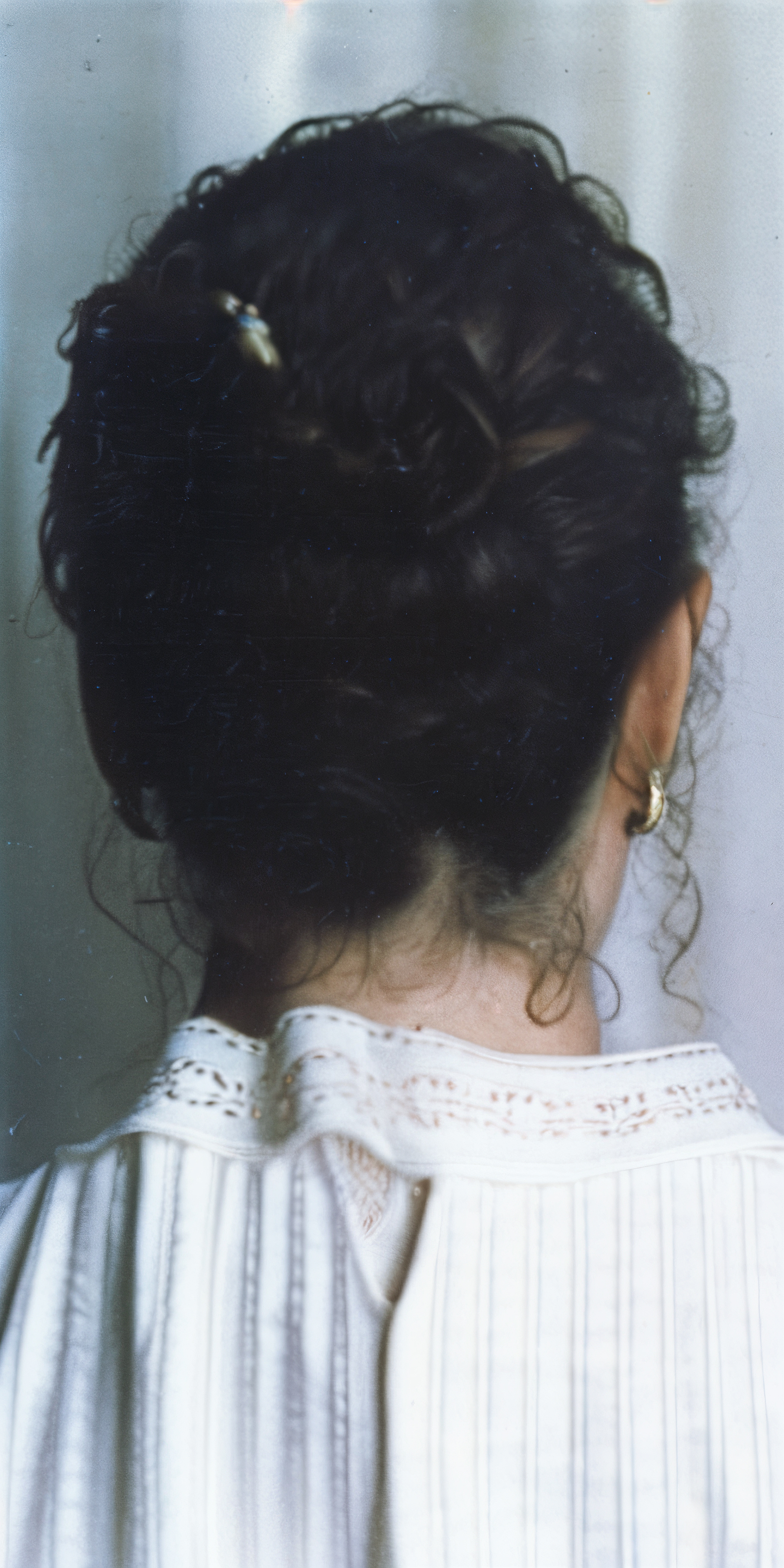

curated by Sineglossa
“With Argo, Paolo Bufalini continues his investigation into the remediation of biographical materials through technological devices, which began with the projects Land of Nod (2023) and beloved (2023). The project applies generative artificial intelligence tools to a series of datasets made up of the digitalisation of the artist's family albums. Once the datasets were created, the artist used them to train text-to-image generative models capable of reproducing the likenesses of the subjects represented in the albums. The result is the generation of an augmented past, a photographically credible representation of something that has not been, but might have been, in an ambiguous overlap between what's factual and what's imagined.
The family albums provide an opportunity for a more general reflection on archives and their power to open windows onto parallel worlds through a dizzying knowledge that redefines the linearity of time. The result is a series of syntographies in which the artist's family members are depicted, at different ages of their lives, in the pose of sleepers. The ambiguity of sleep, where the subject is both absent and present, reflects the more general uncertainty of the image and recalls the dreamlike dimension underlying the entire project.
Argo, from the very title, is intended as a journey - a journey through time and through the artist's personal history, but also a journey into the technological unconscious, that space containing data that cannot be directly interpreted (in computer science latent space) on which generative models process images through associations precluded to humans. By customizing generative models with biographical and emotionally invested materials, Bufalini operates a poetic re-appropriation of the technological device, subjecting those same materials to the unpredictability of statistical correlations. The sculptural work that completes the project declines a similar idea of latency on a more processual level, presenting flasks containing a stirring acid solution in which second-hand gold jewellery is dissolved. The chemical process places gold in a condition of ambiguous presence - it is physically present but invisible and reversible in its original state -, opening up a hypothetical dimension of new generative possibilities.”
Sineglossa
Argo has been realized thanks to the support of:
SIAE
Ministero della Cultura
and in collaboration with:
Palazzo Ducale, Genova
Chemistry Department of the University of Turin, under the supervision of Dr. Andrea Jouve.
Exhibiton venues:
2024 Fondazione Home Movies, (Sala Refettorio ex Chiesa di San Mattia), Bologna
2024 Palazzo Ducale, Genova
Graphic design: Eleonora Rossi
Press:
Juliet
ATP Diary
Mangrovia [ITA] [ENG]
Exibart
Pictures:
1-4 Argo, exhibition views at Fondazione Home Movies, (Sala Refettorio ex Chiesa di San Mattia), Bologna
5 Portrait of the sister as a sleeper I, 2024, inkjet print on cotton paper, 67,5x120 cm
6 Portrait of the father as a sleeper I, 2024, inkjet print on cotton paper, 67,5x120 cm
8-9 Portrait of the mother as a sleeper I, 2024, inkjet print on cotton paper, 80x120 cm
10-12 HEALTH, 2024, gold ring and earrings dissolved in aqua regia, 3.3 borosilicate glass flasks, magnetic stirrers, enamelled mdf, glass, led, 135hx80x45 cm
13-14 Argo, exhibition views at Fondazione Home Movies, (Sala Refettorio ex Chiesa di San Mattia), Bologna
15-17 Portrait of the sister as a sleeper III, 2024, inkjet print on cotton paper, 7,6x13,5 cm (30x45 cm framed) (up)
Portrait of the father as a sleeper III, 2024, inkjet print on cotton paper, 7,6x13,5 cm (30x45 cm framed) (down)
18-19 Portrait of the sister as a sleeper II, 2024, inkjet print on cotton paper, 9X9 cm (45x45 cm framed)
20-22 Portrait of the mother a sleeper III, 2024, inkjet print on cotton paper, 9x13,5 cm (30x45 cm framed) (up)
Portrait of the father as a sleeper II, 2024, inkjet print on cotton paper, 7,6x13,5 cm (30x45 cm framed) (down)
23-25 Portrait of the mother a sleeper IV, 2024, inkjet print on cotton paper, 9x13,5 cm (30x45 cm framed) (up)
Portrait of the mother a sleeper II, 2024, inkjet print on cotton paper, 9x13,5 cm (30x45 cm framed) (down)
26-28 Portrait of the mother as a sleeper I, 2024, inkjet print on cotton paper, 80x120 cm
29-31 Portrait of the father as a sleeper I, 2024, inkjet print on cotton paper, 67,5x120 cm
32-36 Portrait of the sister as a sleeper I, 2024, inkjet print on cotton paper, 67,5x120 cm
Ph: Manuel Montesano
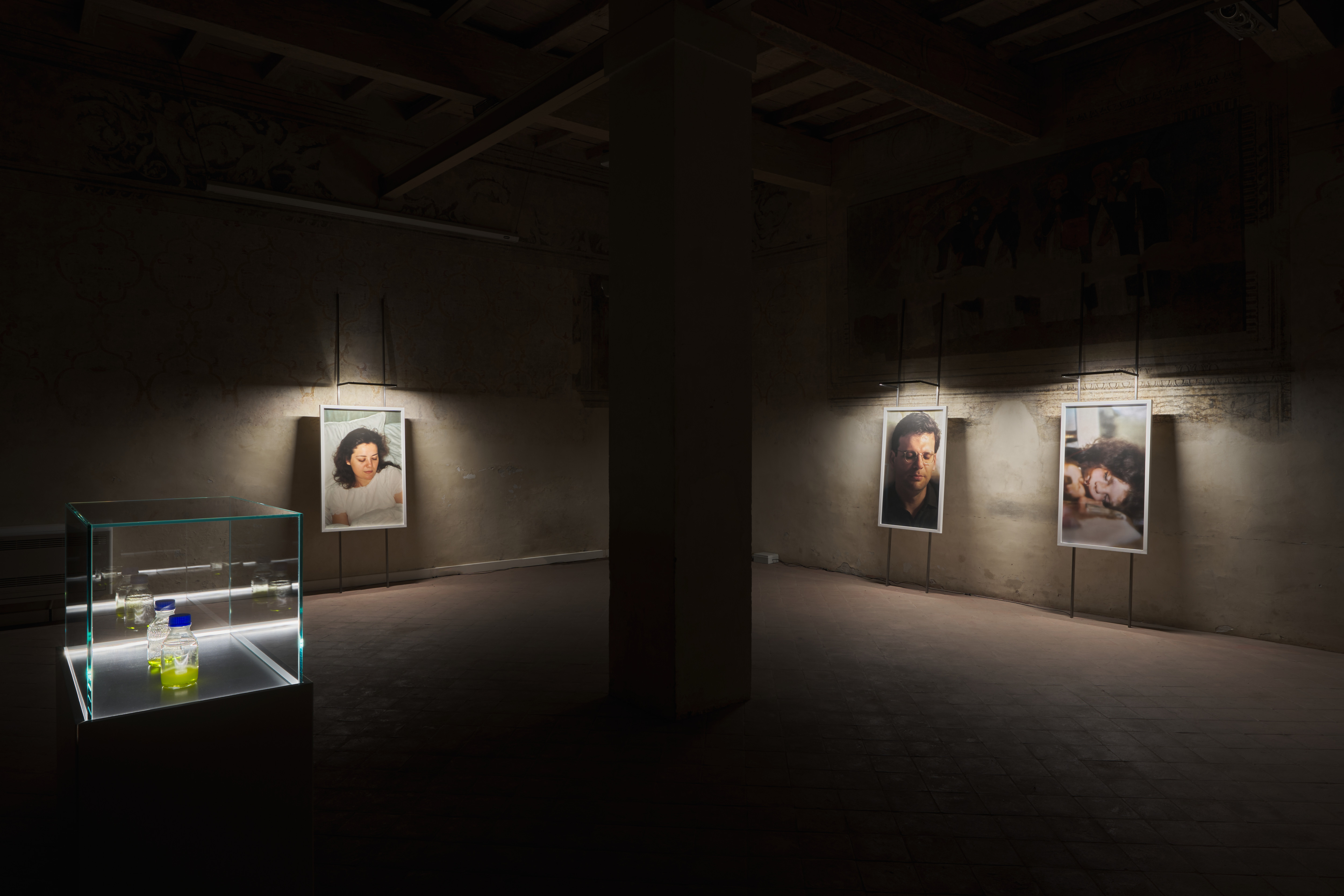
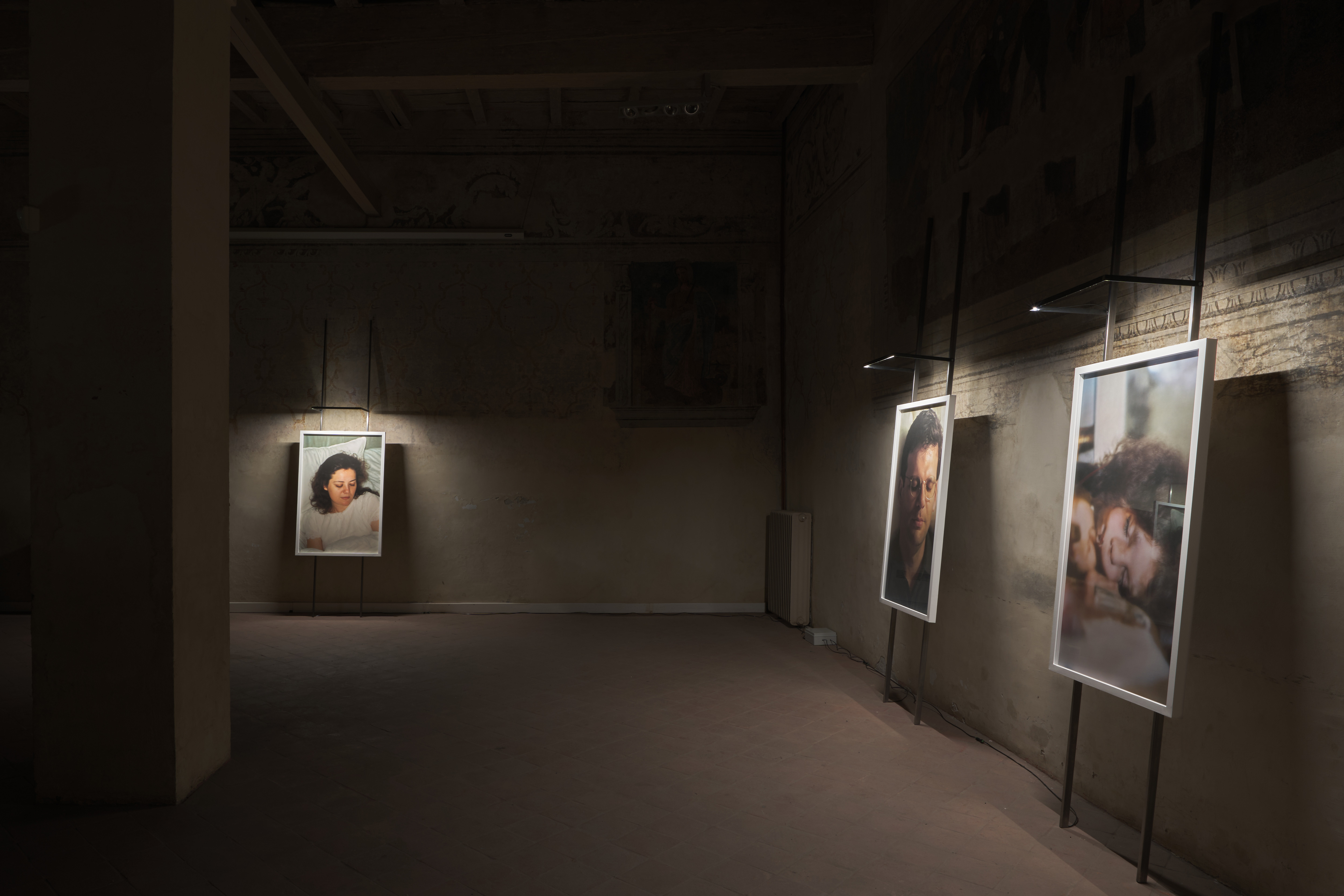


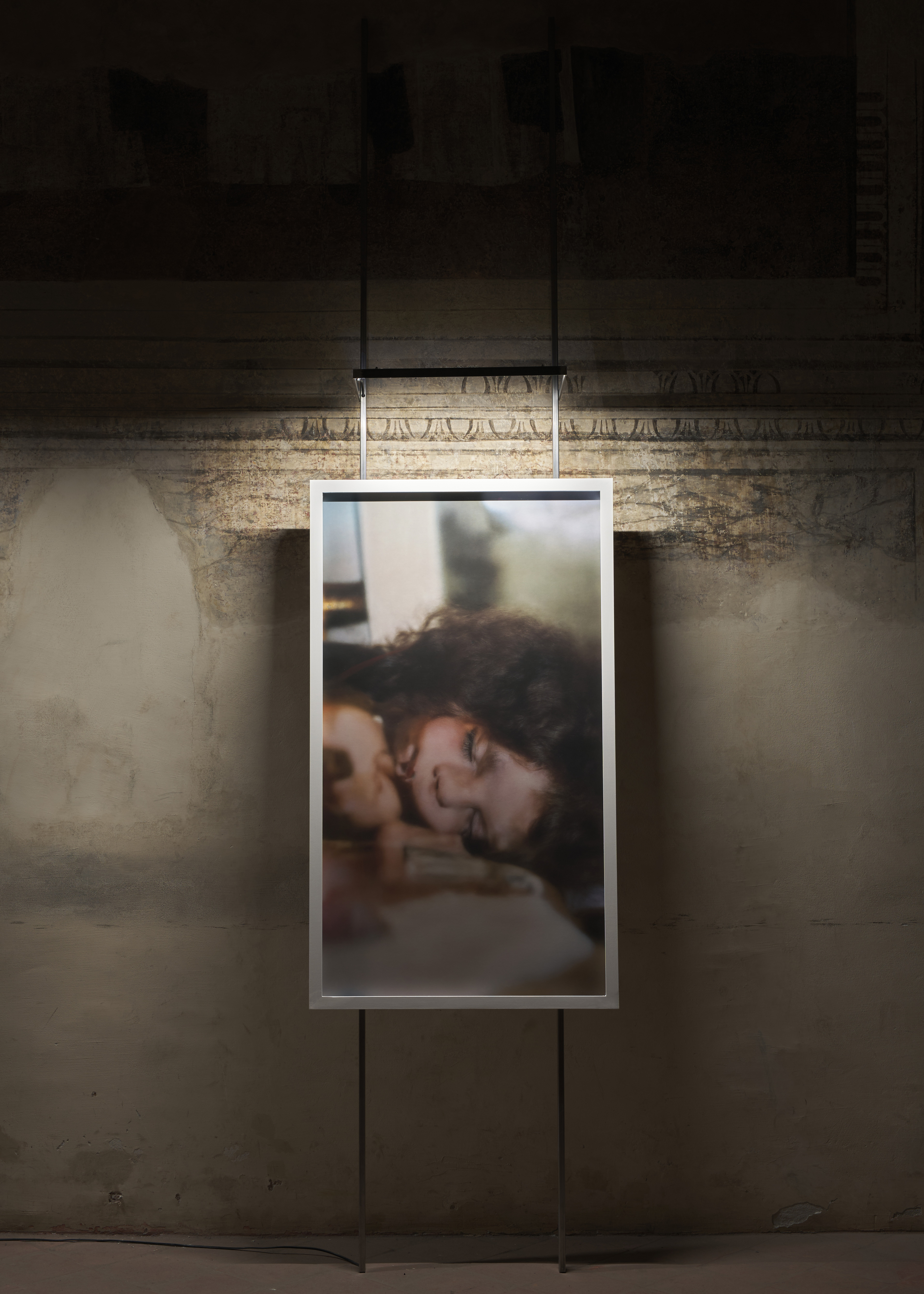
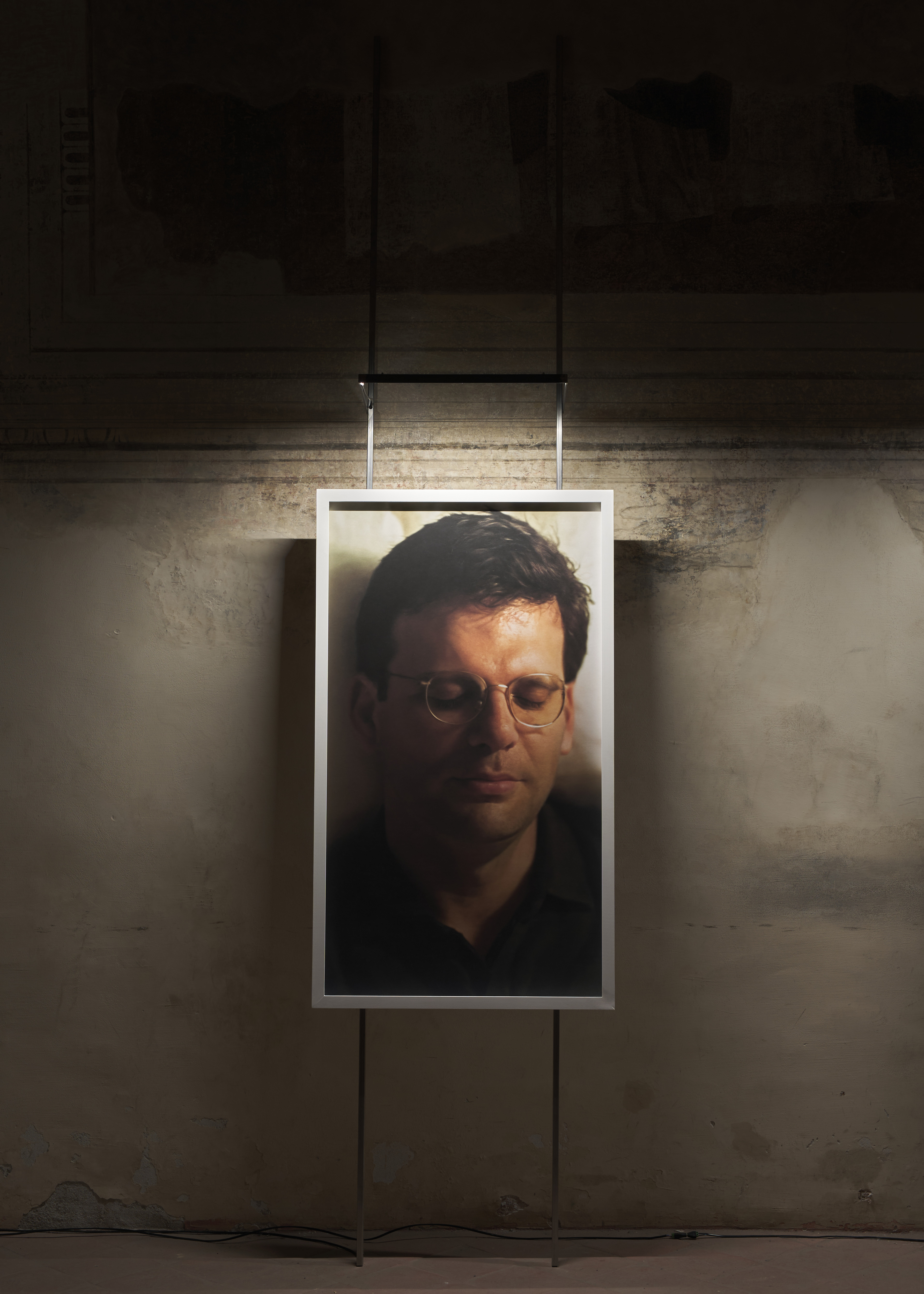
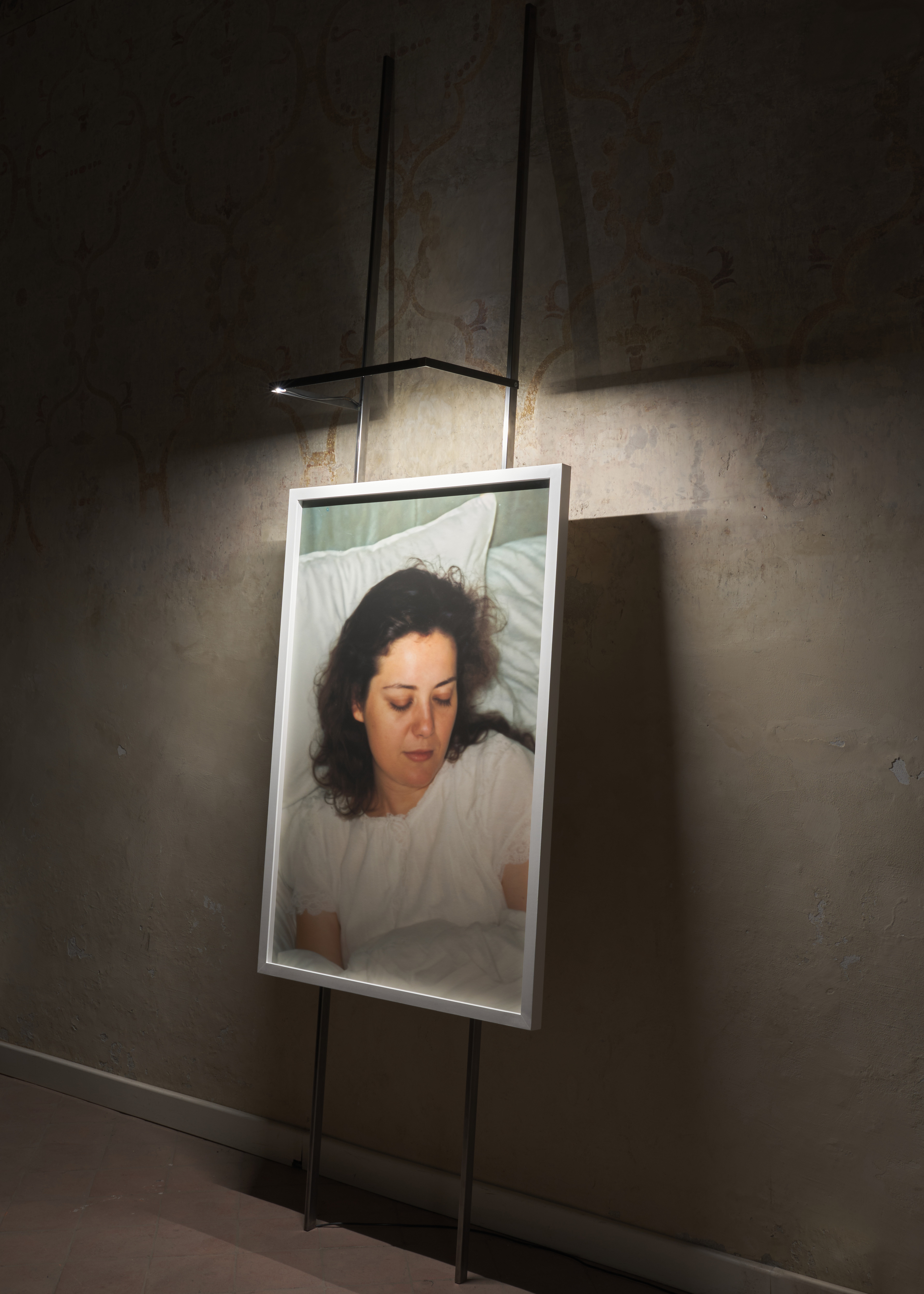

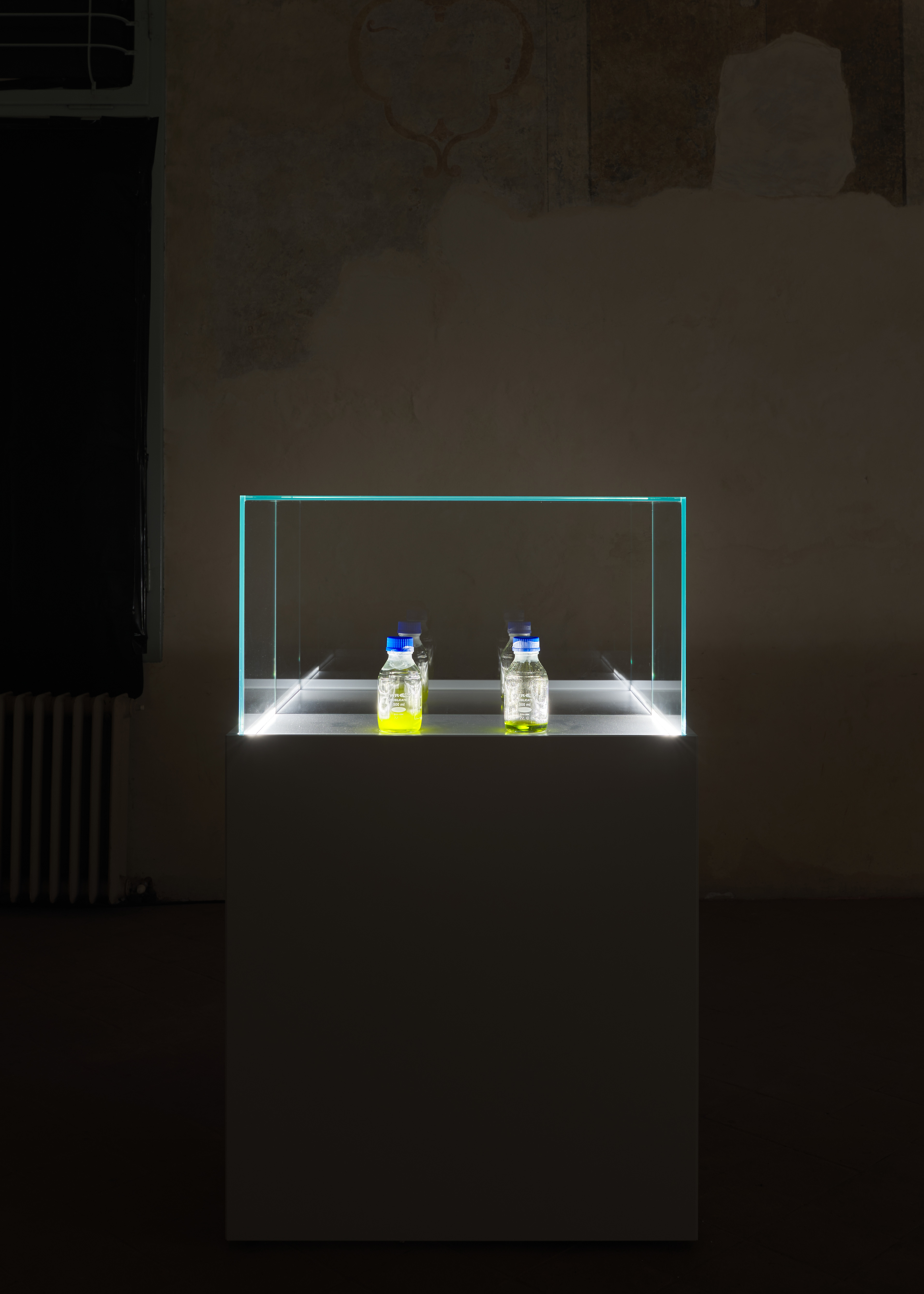
 ">
">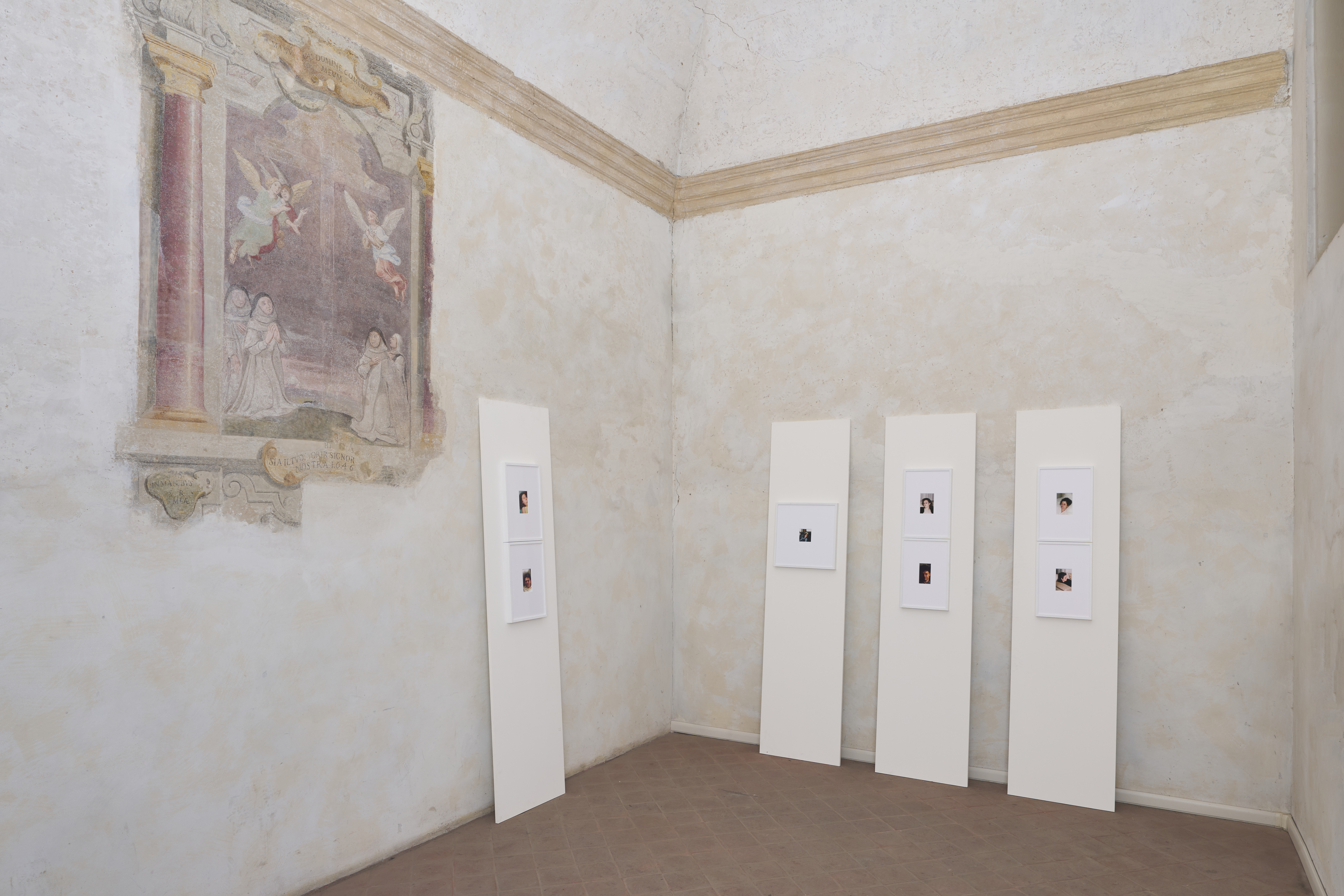
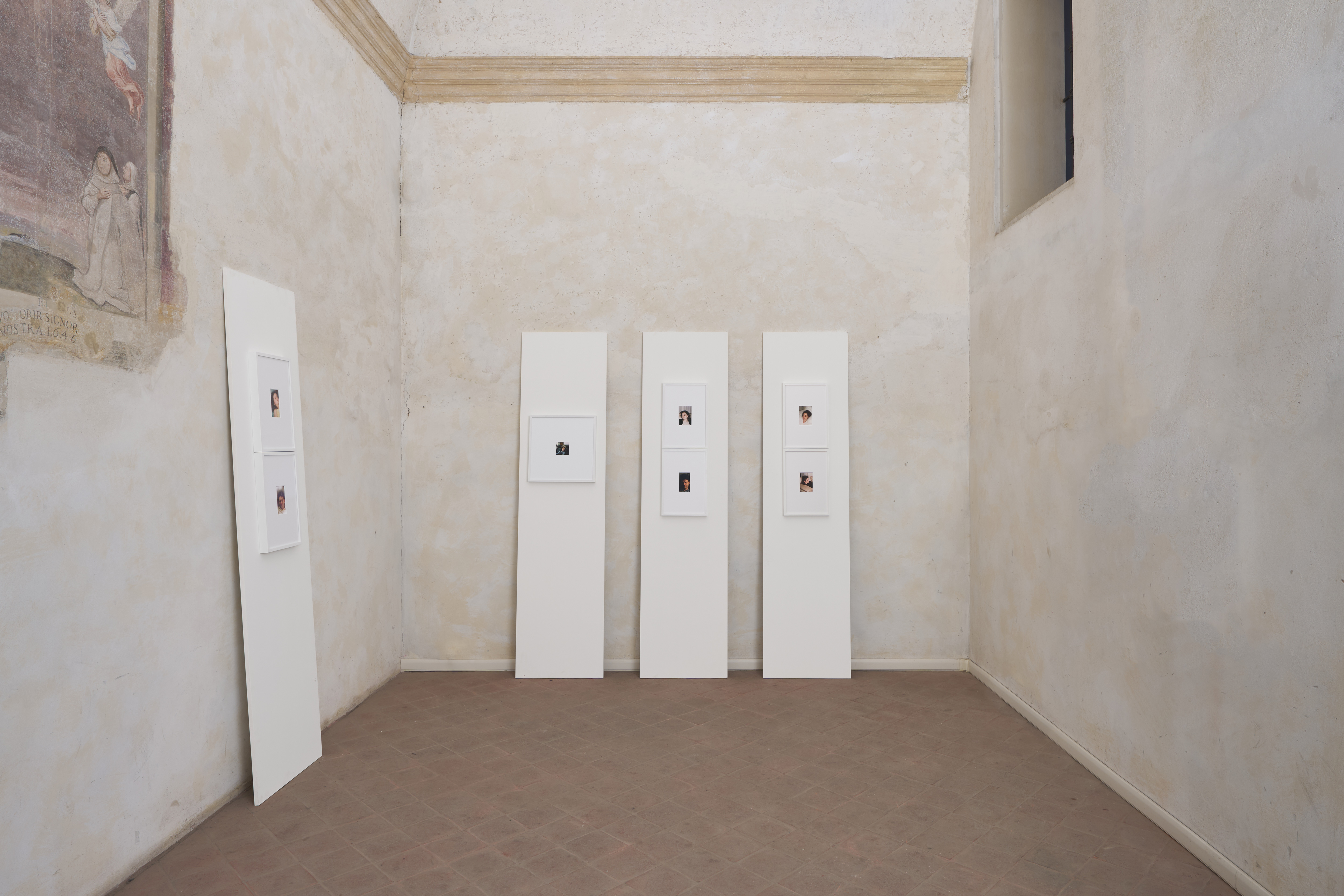
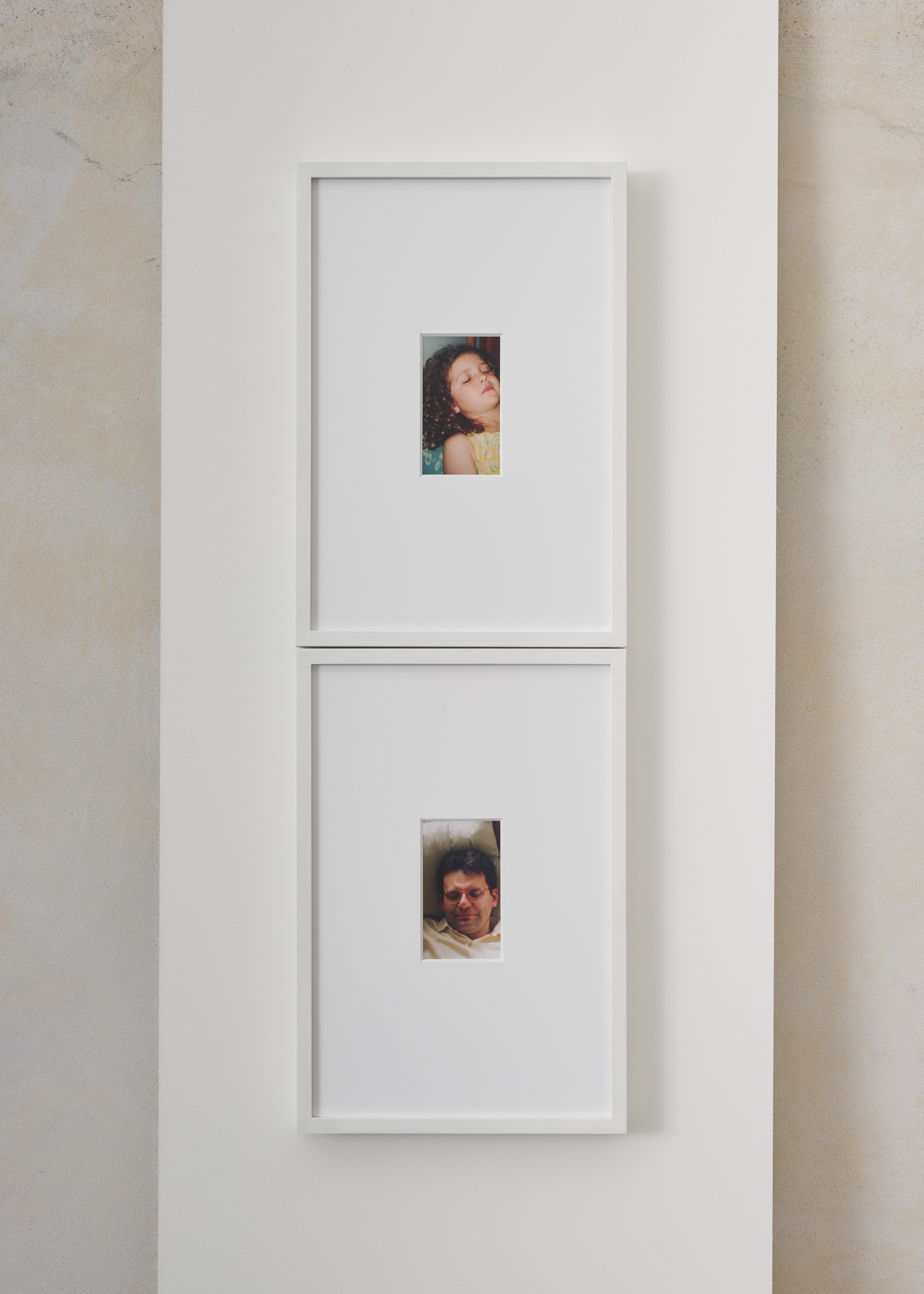
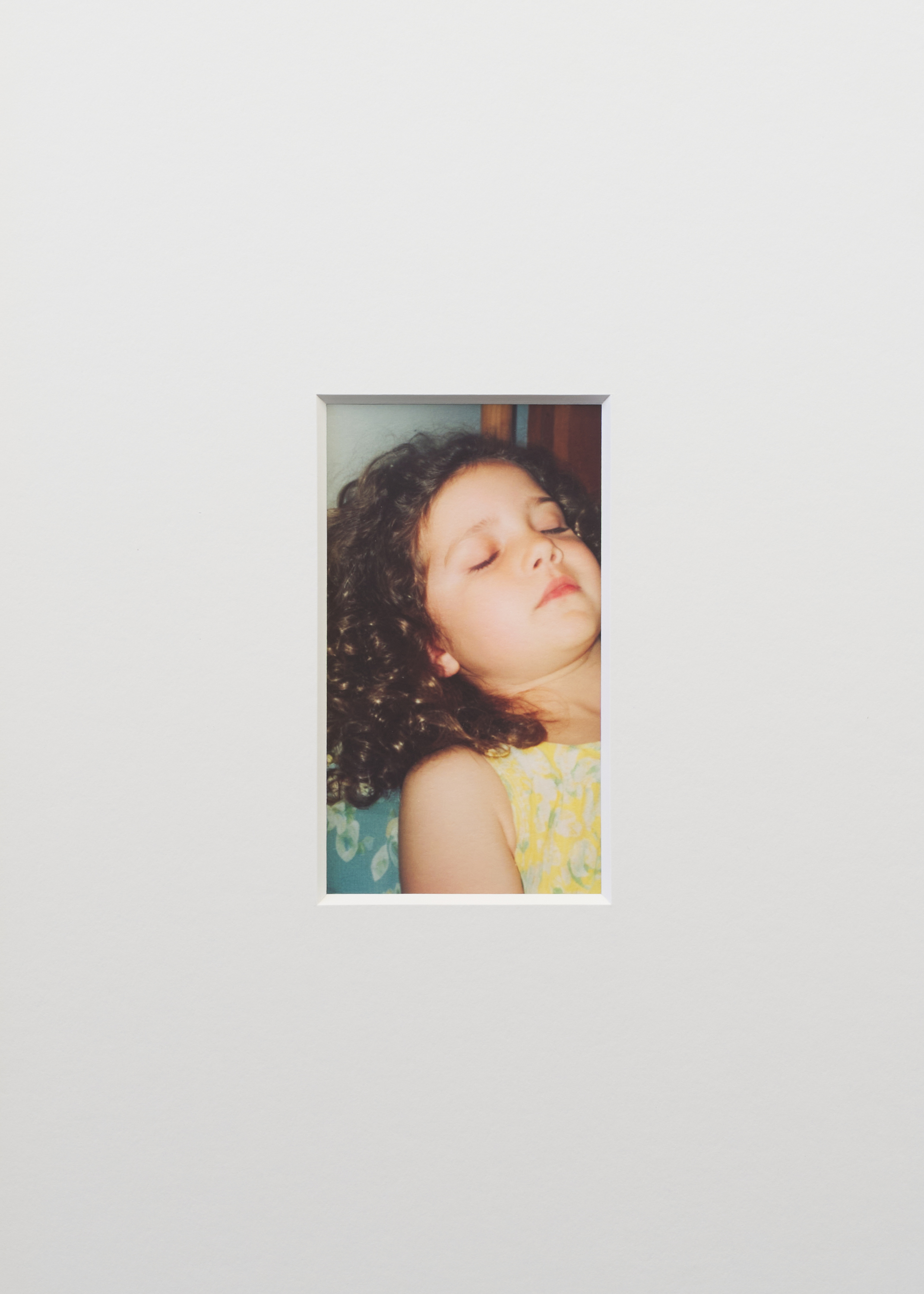
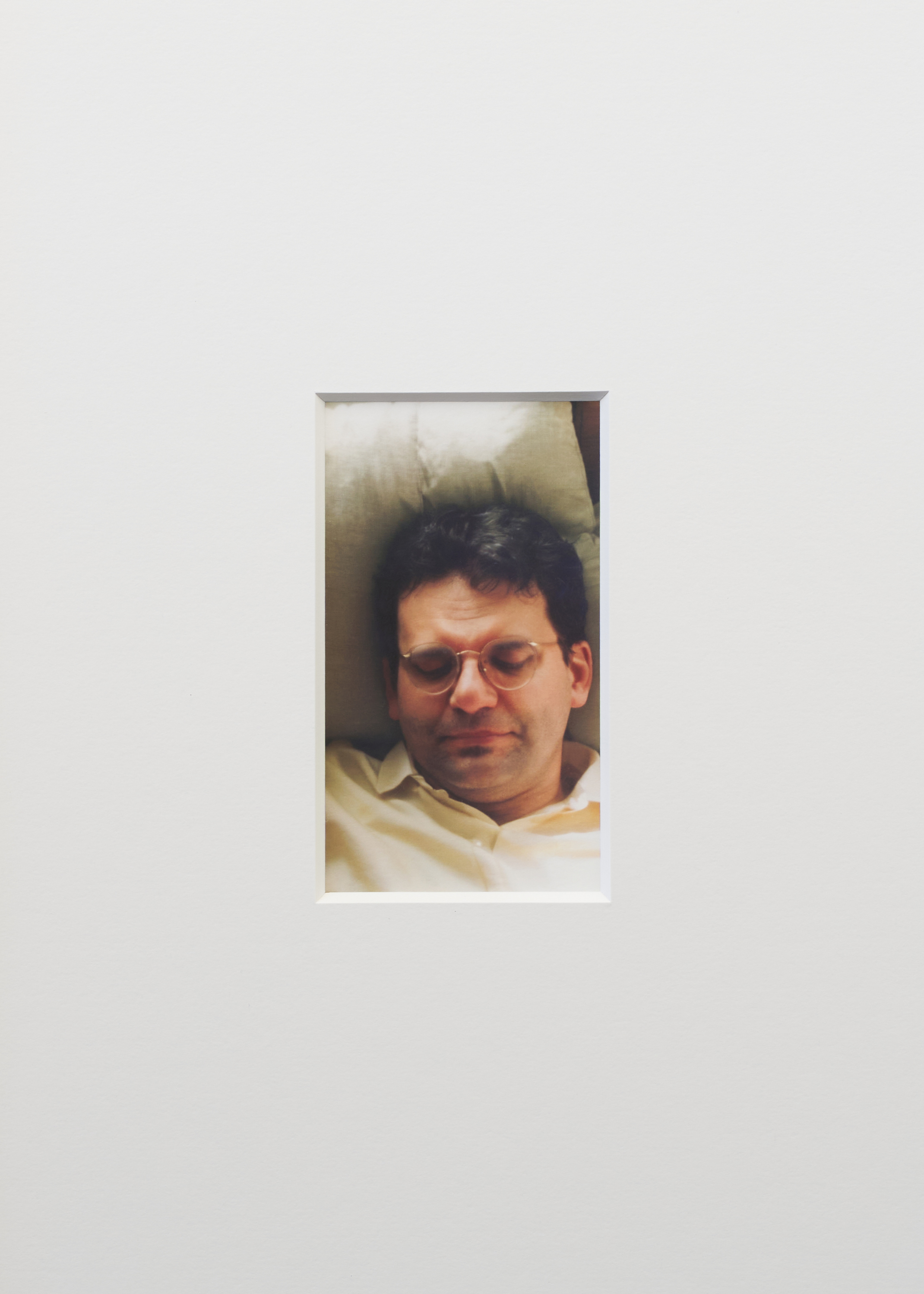

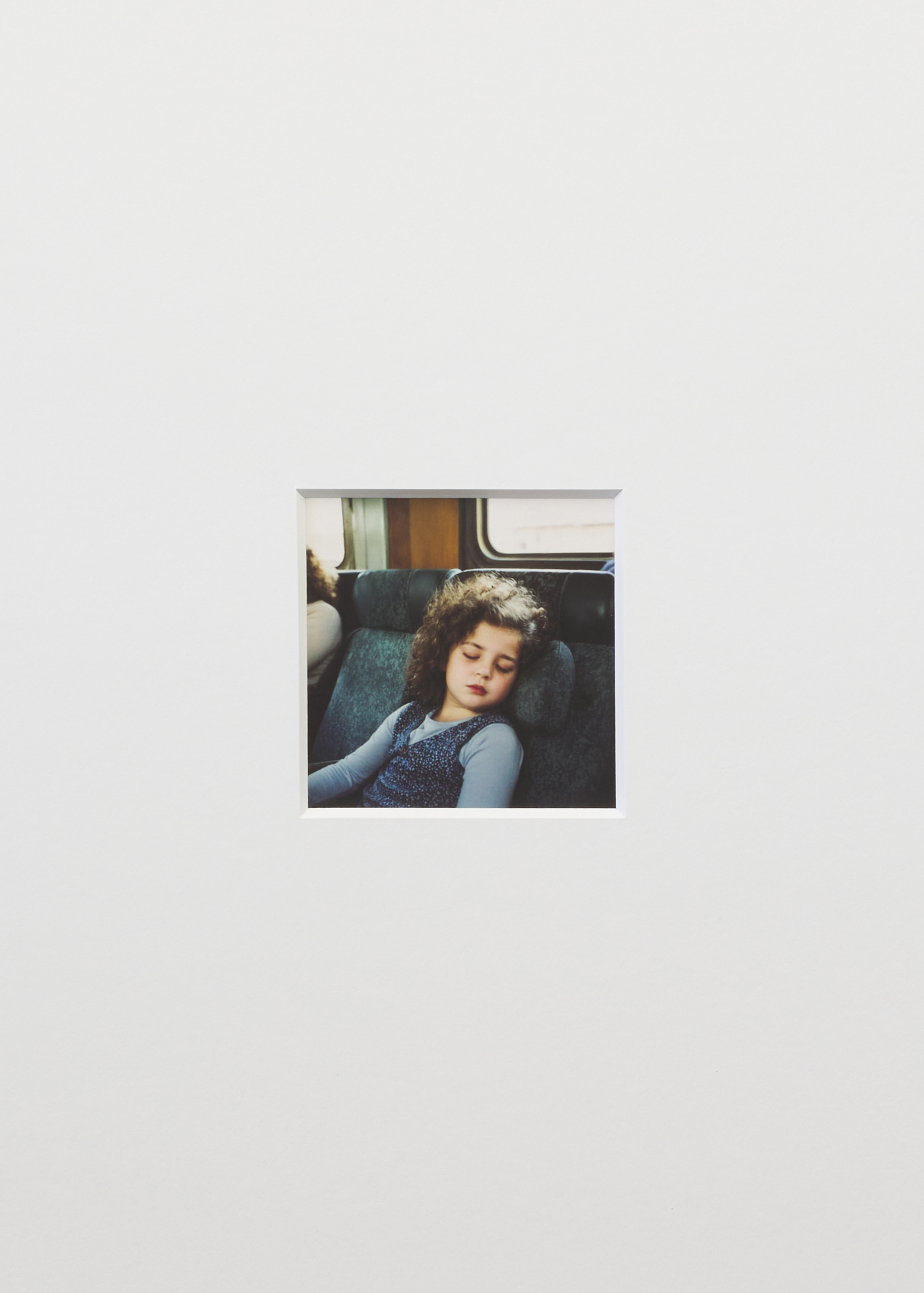
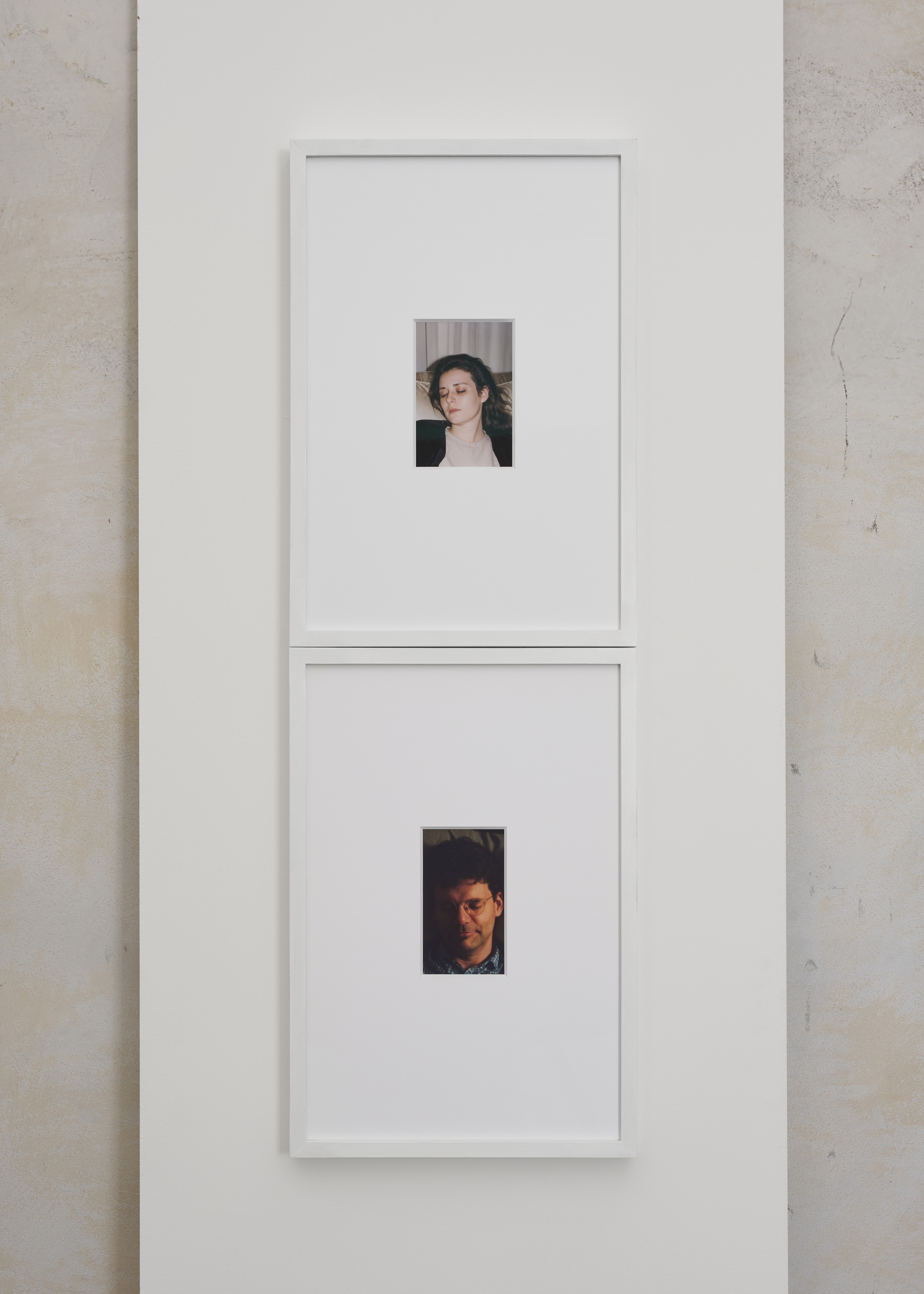

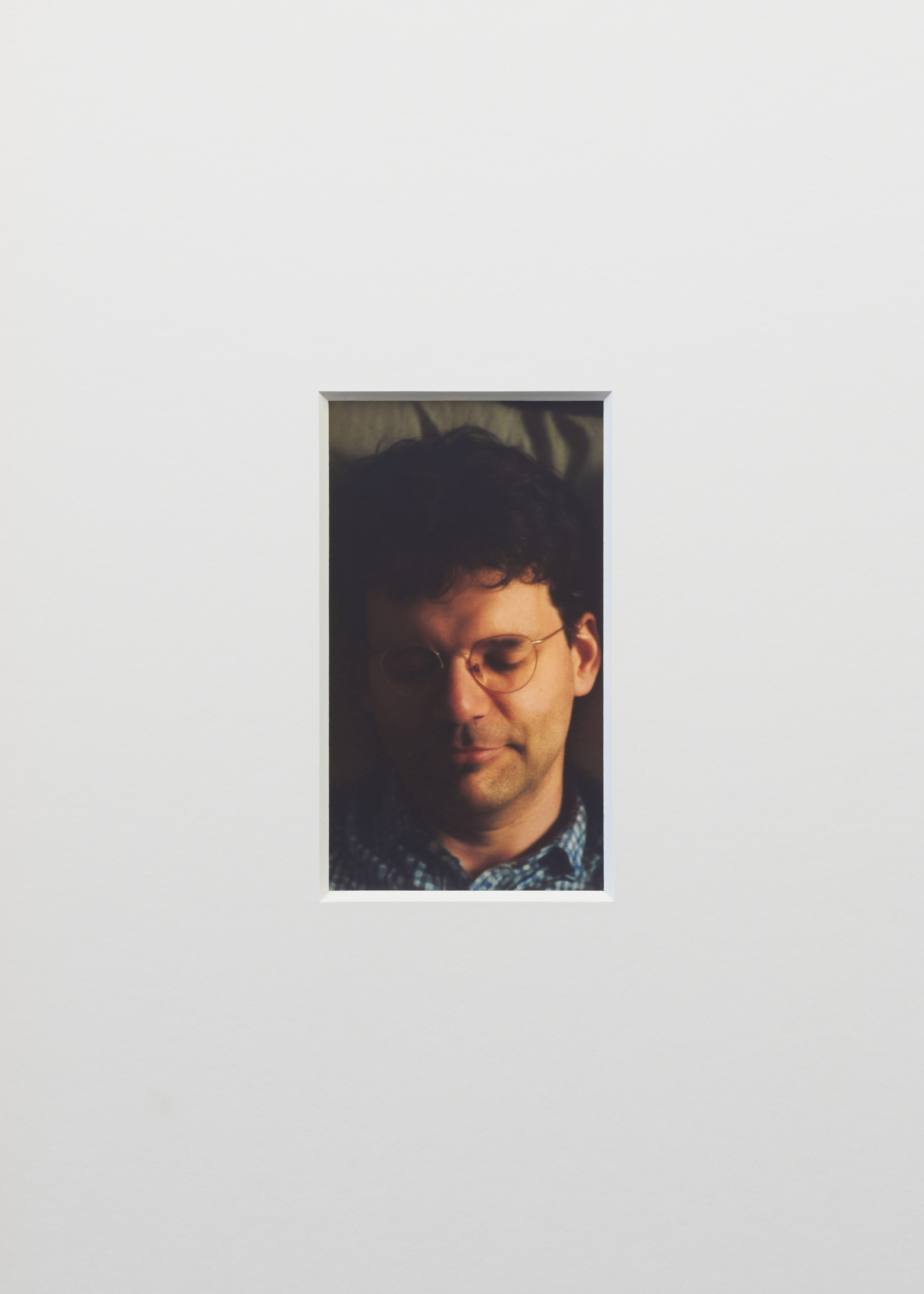
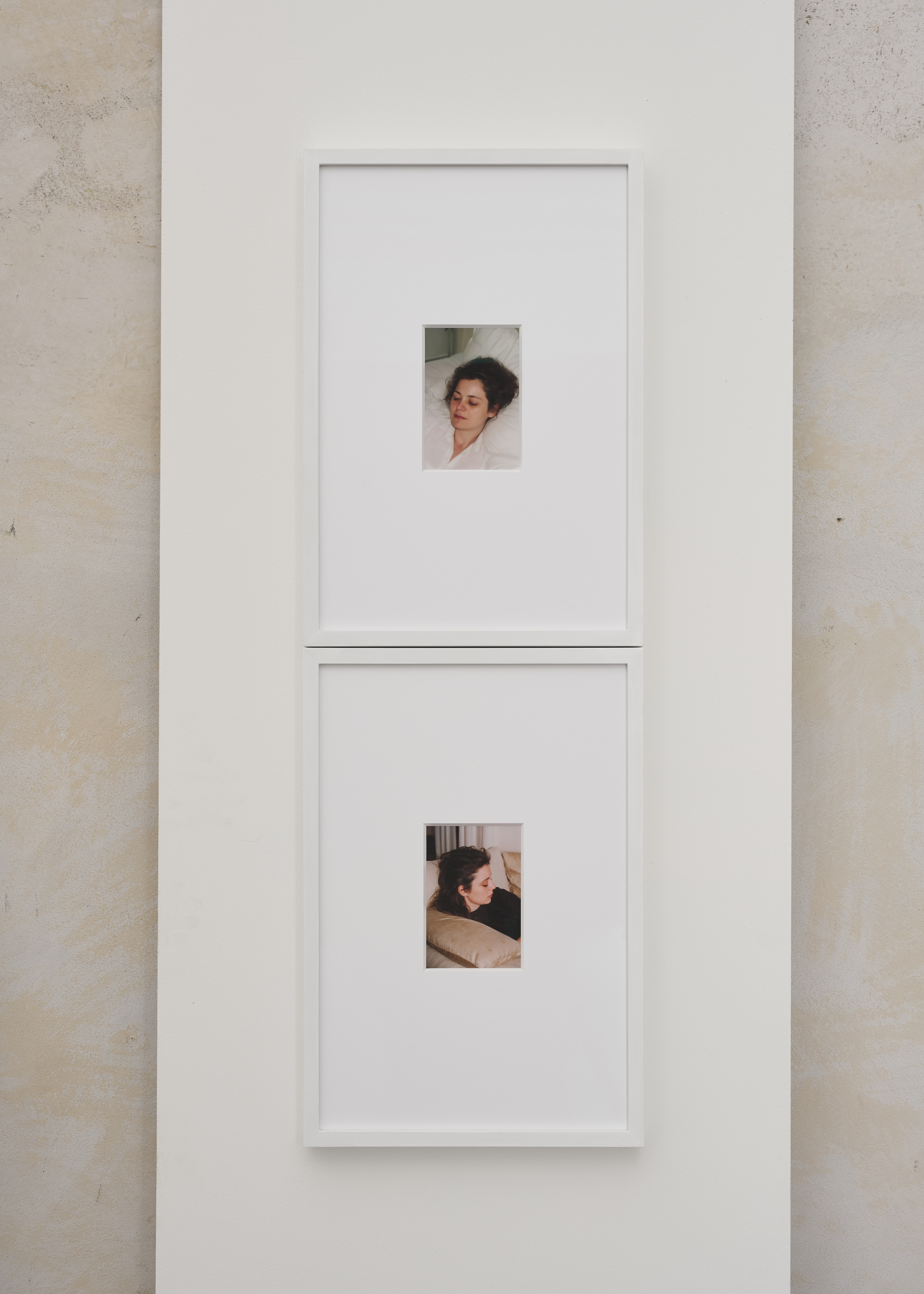
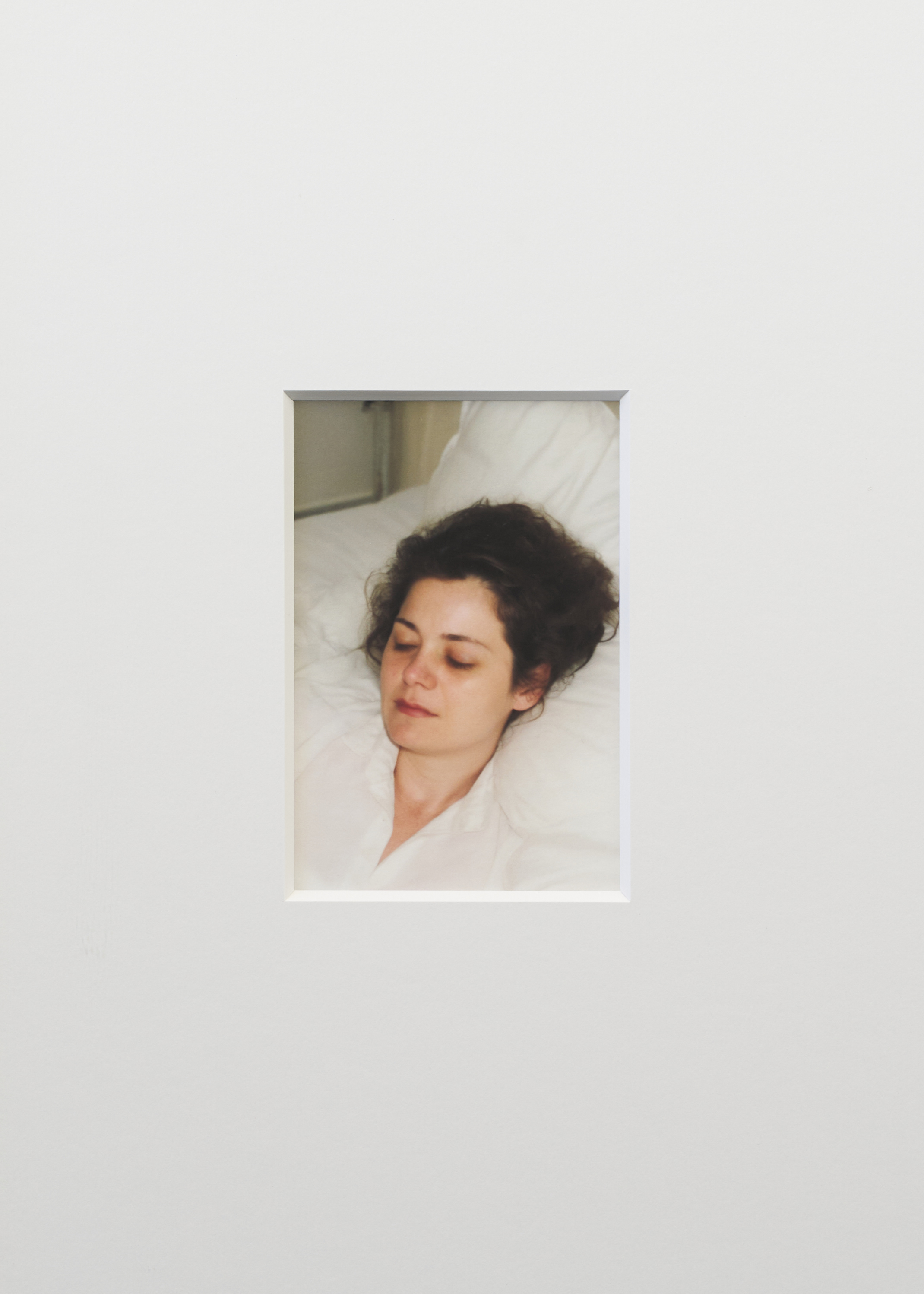
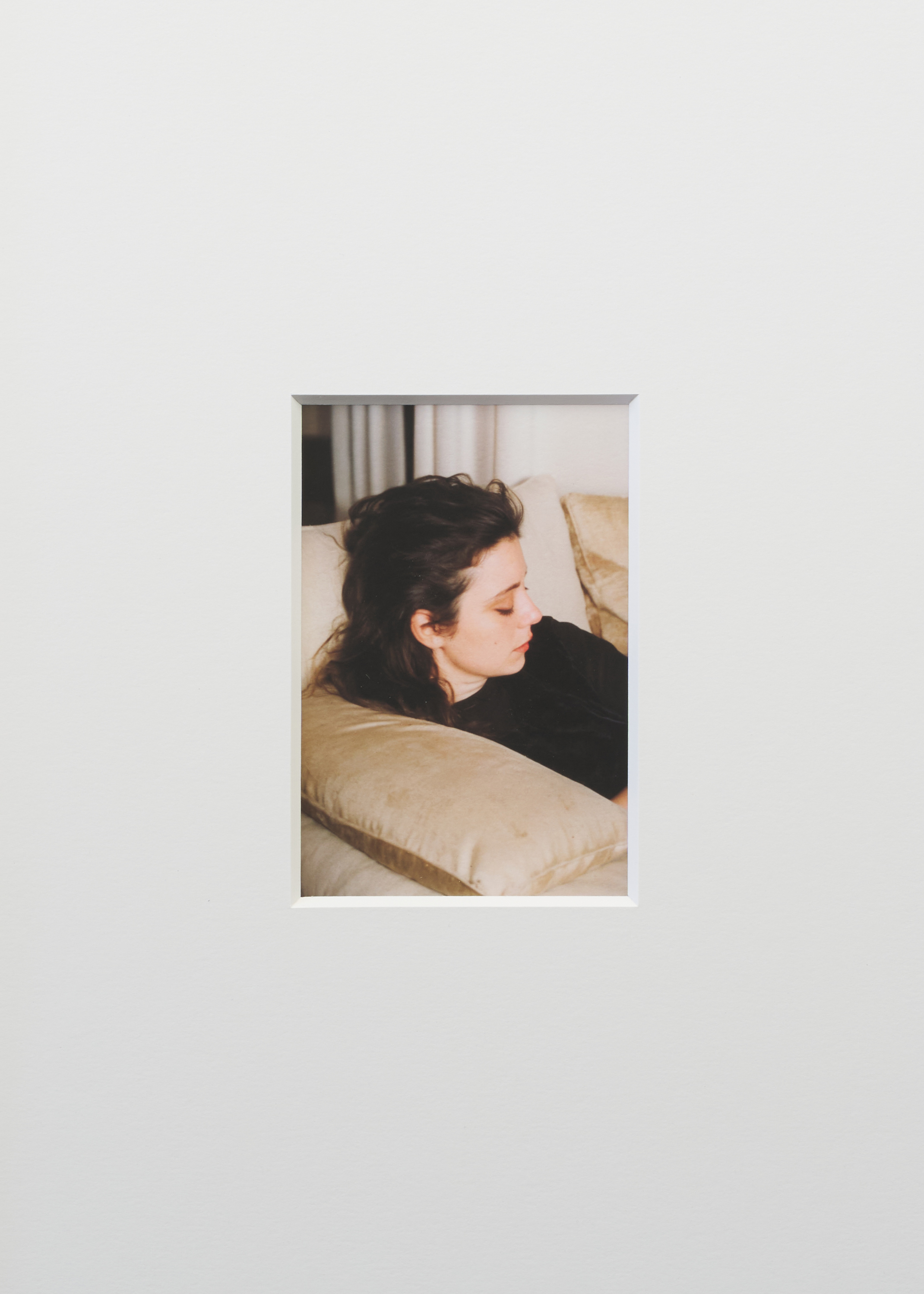
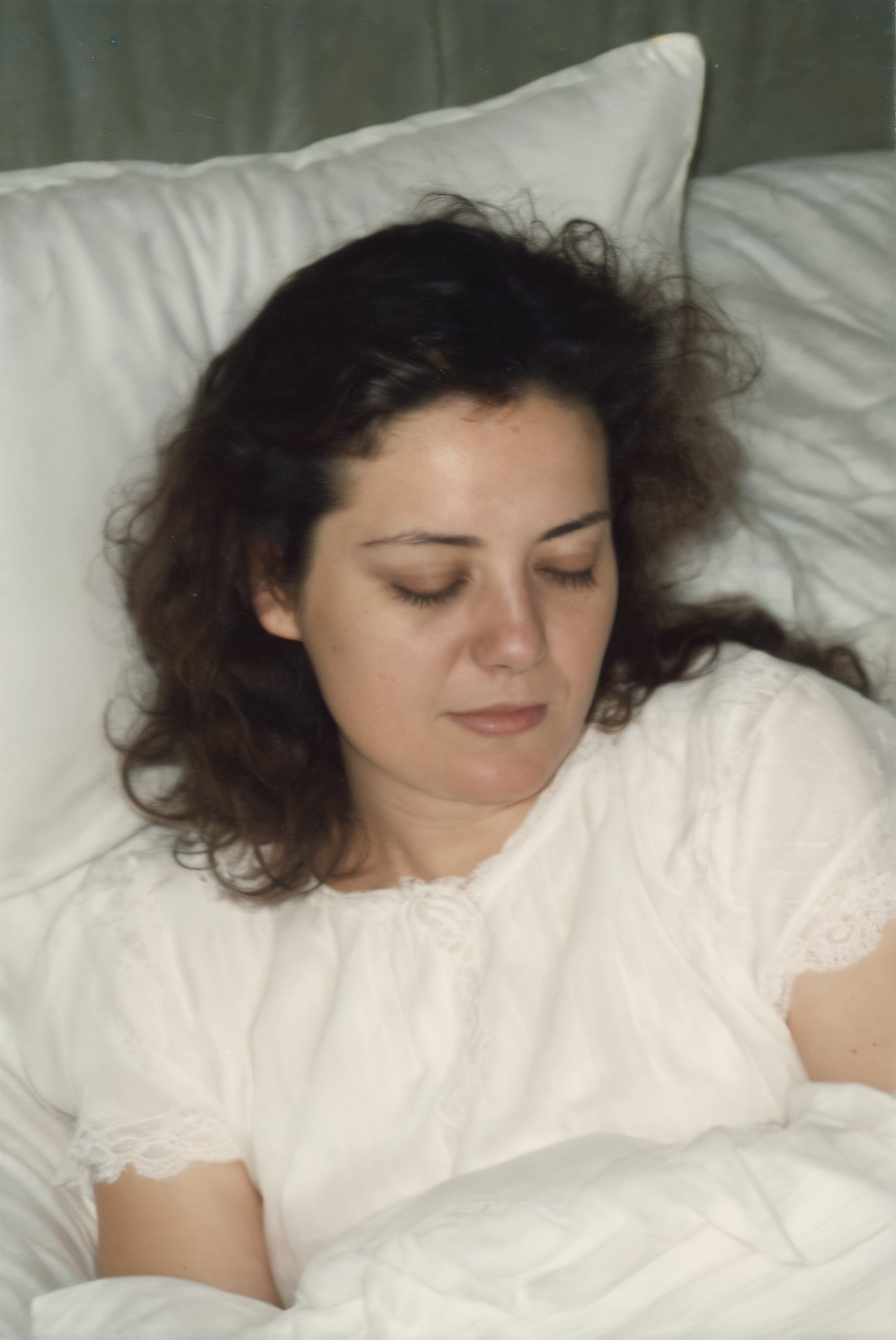
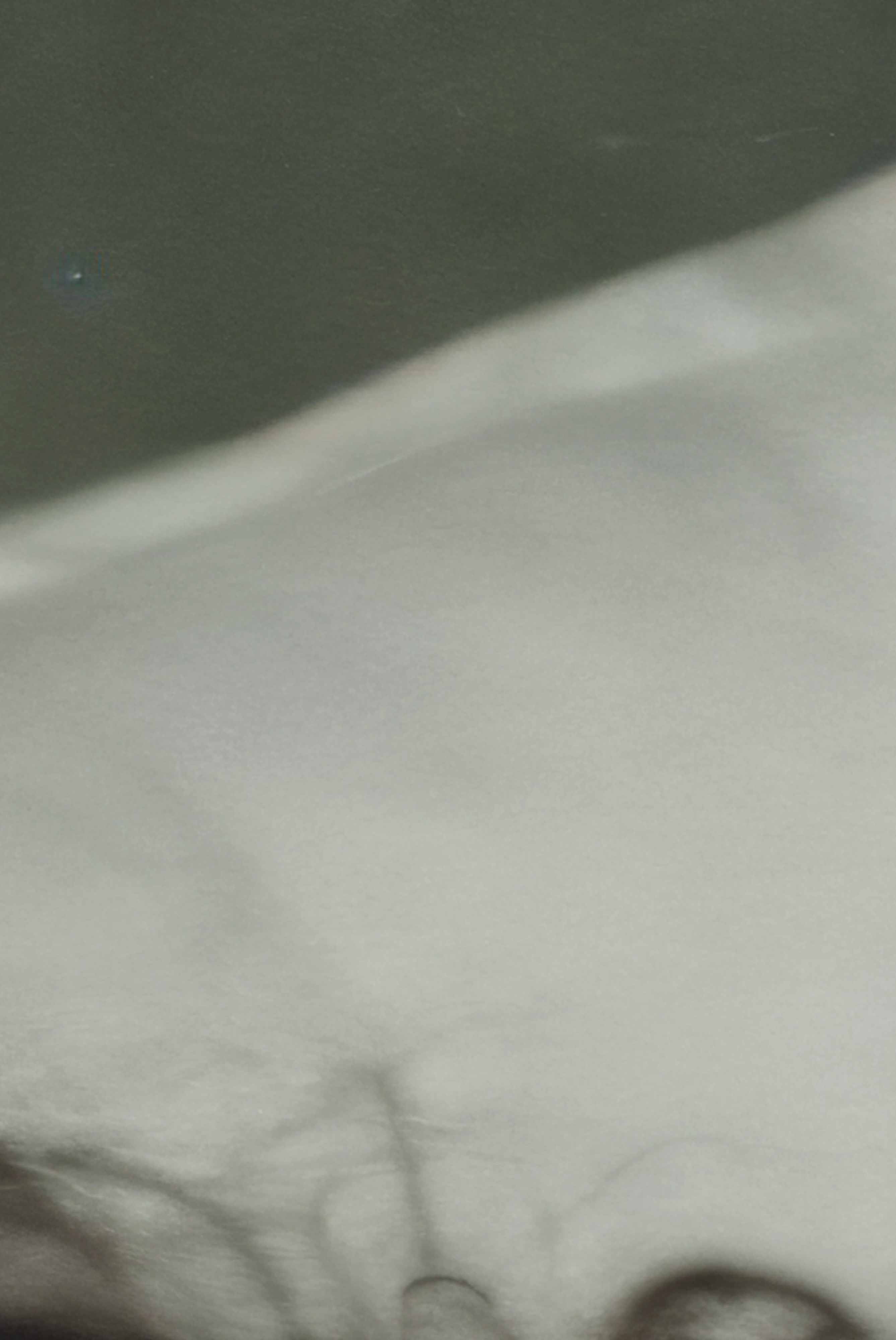
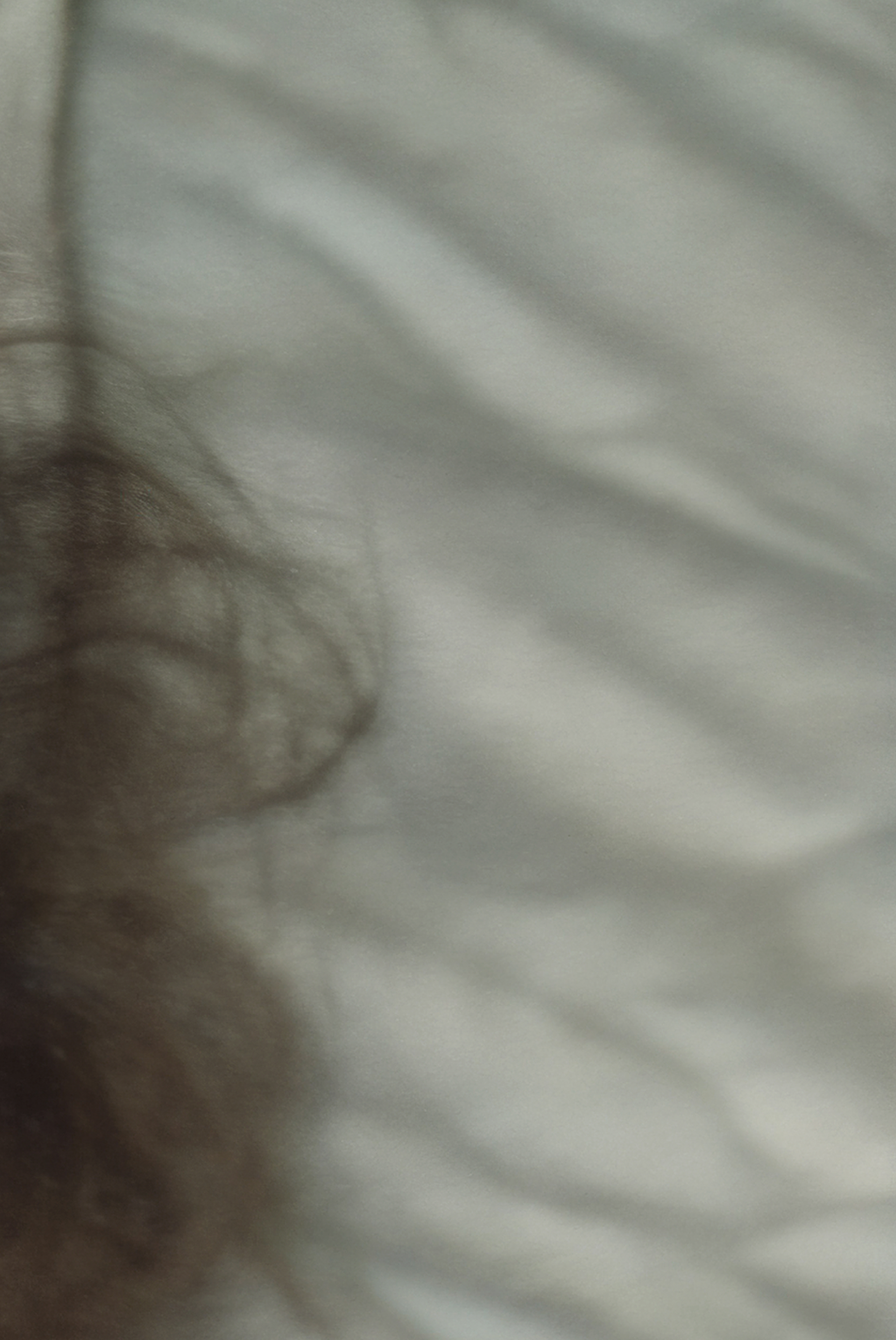



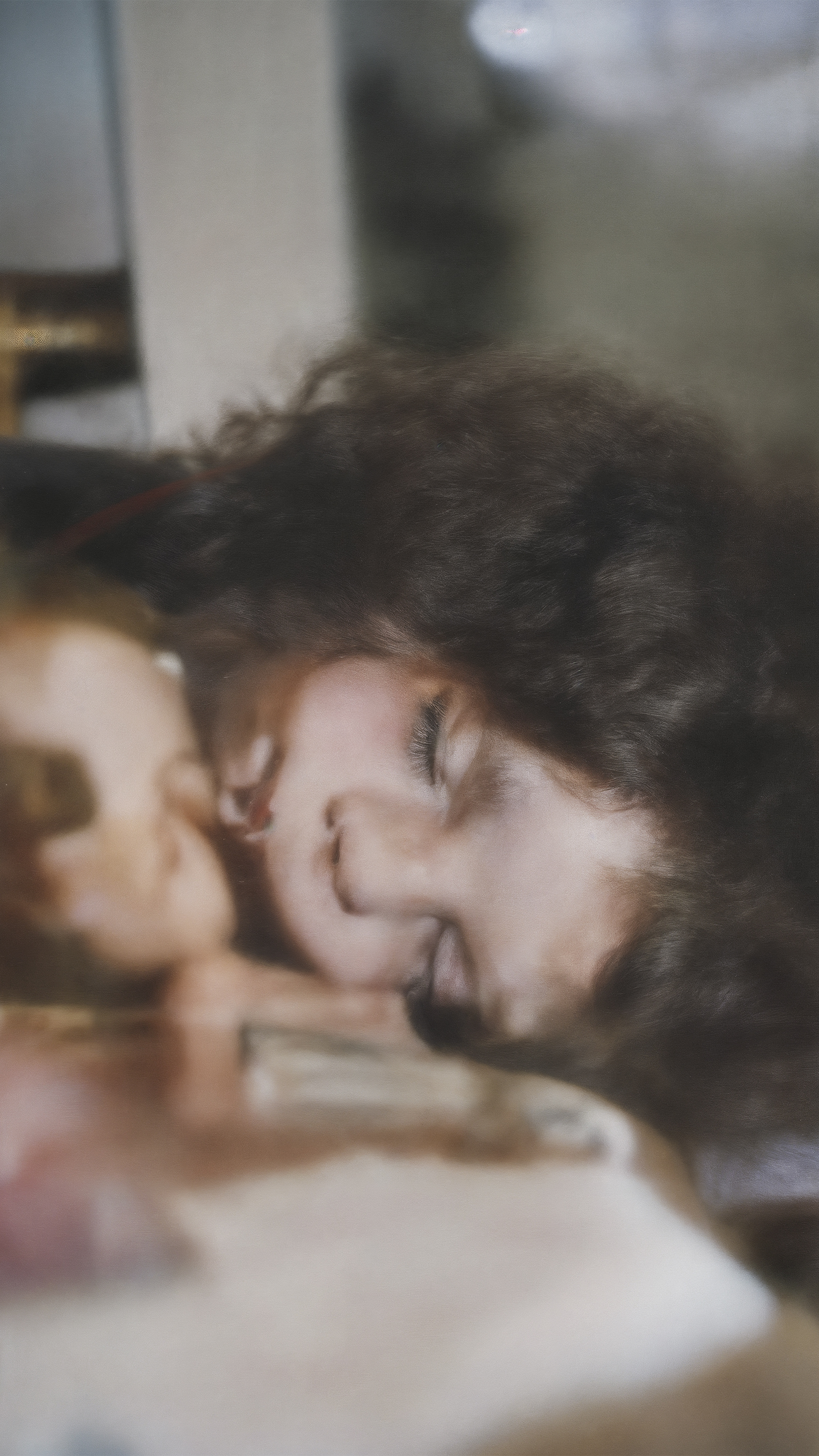

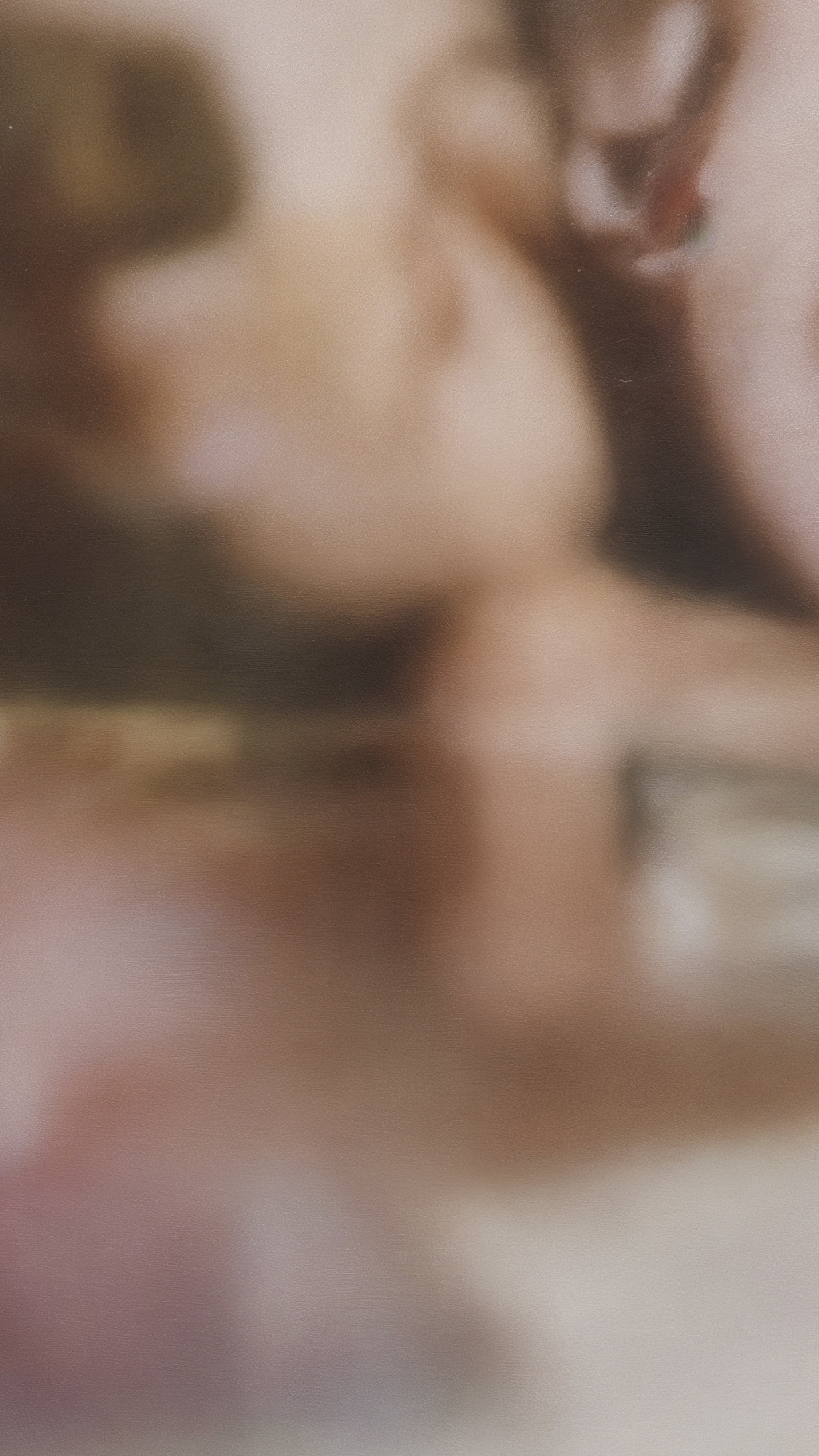
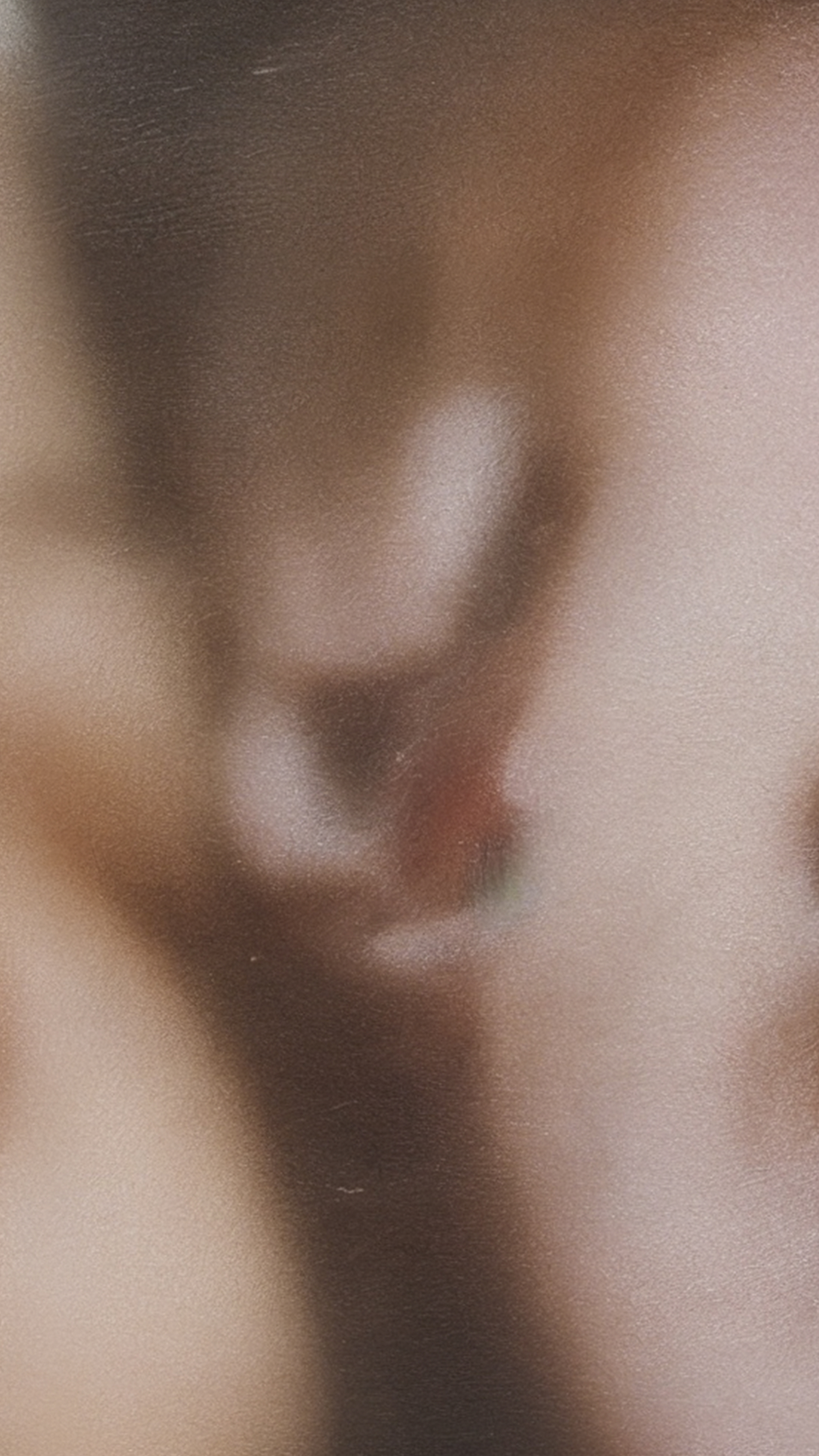
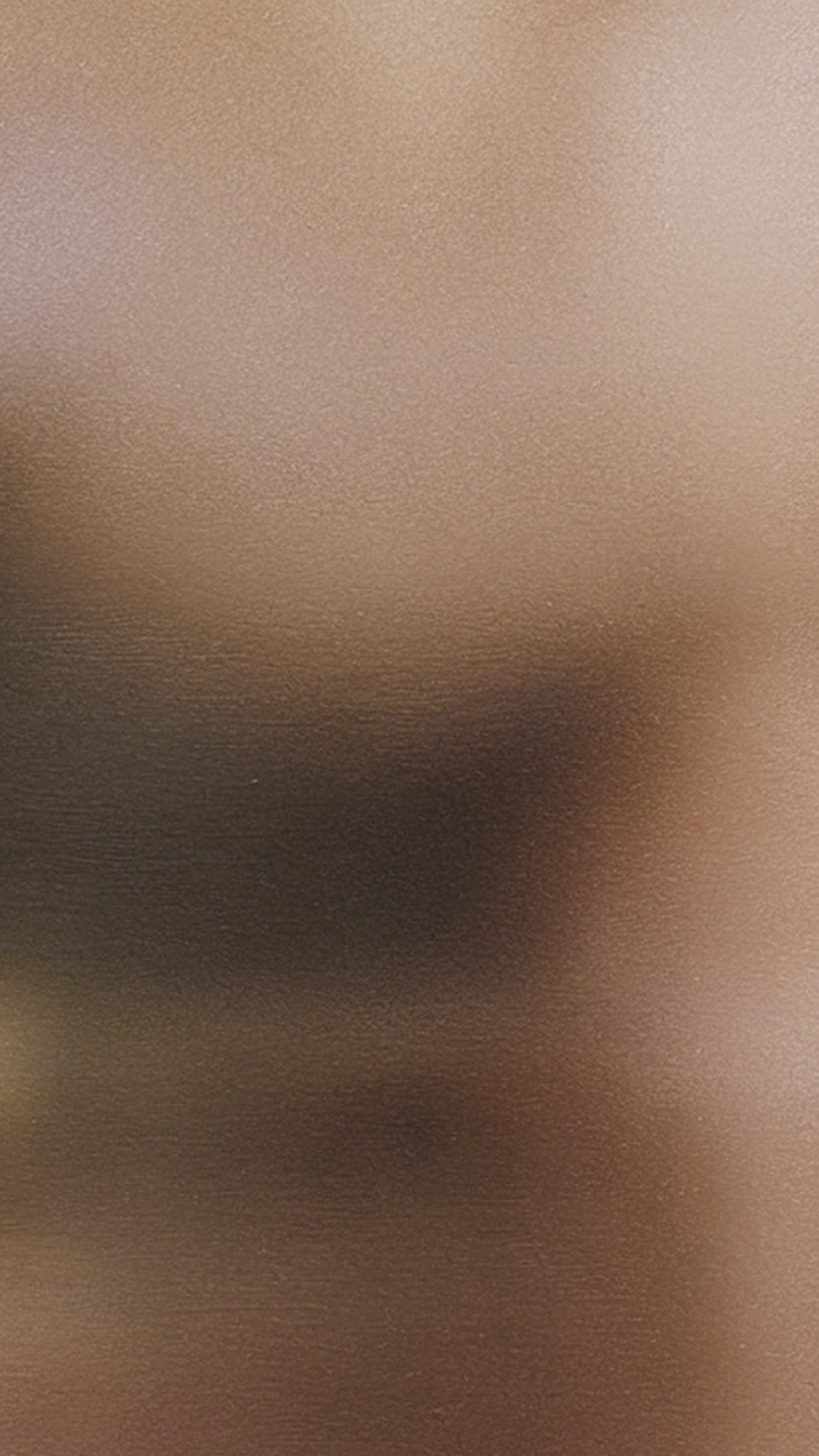
contact c-print from 4x5” negative on Fuji Chrystal Archive papaer, 36x27x3cm (framed)
About twelve or thirteen years ago my mother came home with a tableau depicting four hearts and hung it in the kitchen. It is an object that has always caught my attention - for its dissonance with the other furnishings, and for the sentimentalism it expresses, almost obscene, tender. Going through numerous removals and different placements, it has slowly taken root in my imagination as a kind of domestic icon, a synaptic shortcut for a set of feelings that is hard to define - melancholy, affection, guilt. I wanted to portray it as I happened to see it one day, on the veranda. This seemingly marginal placement actually reaffirmed its power - it was still there.
Exhibitions:
Cuore (solo), 2023, MarktStudio, Bologna
Ph. Carlo Favero
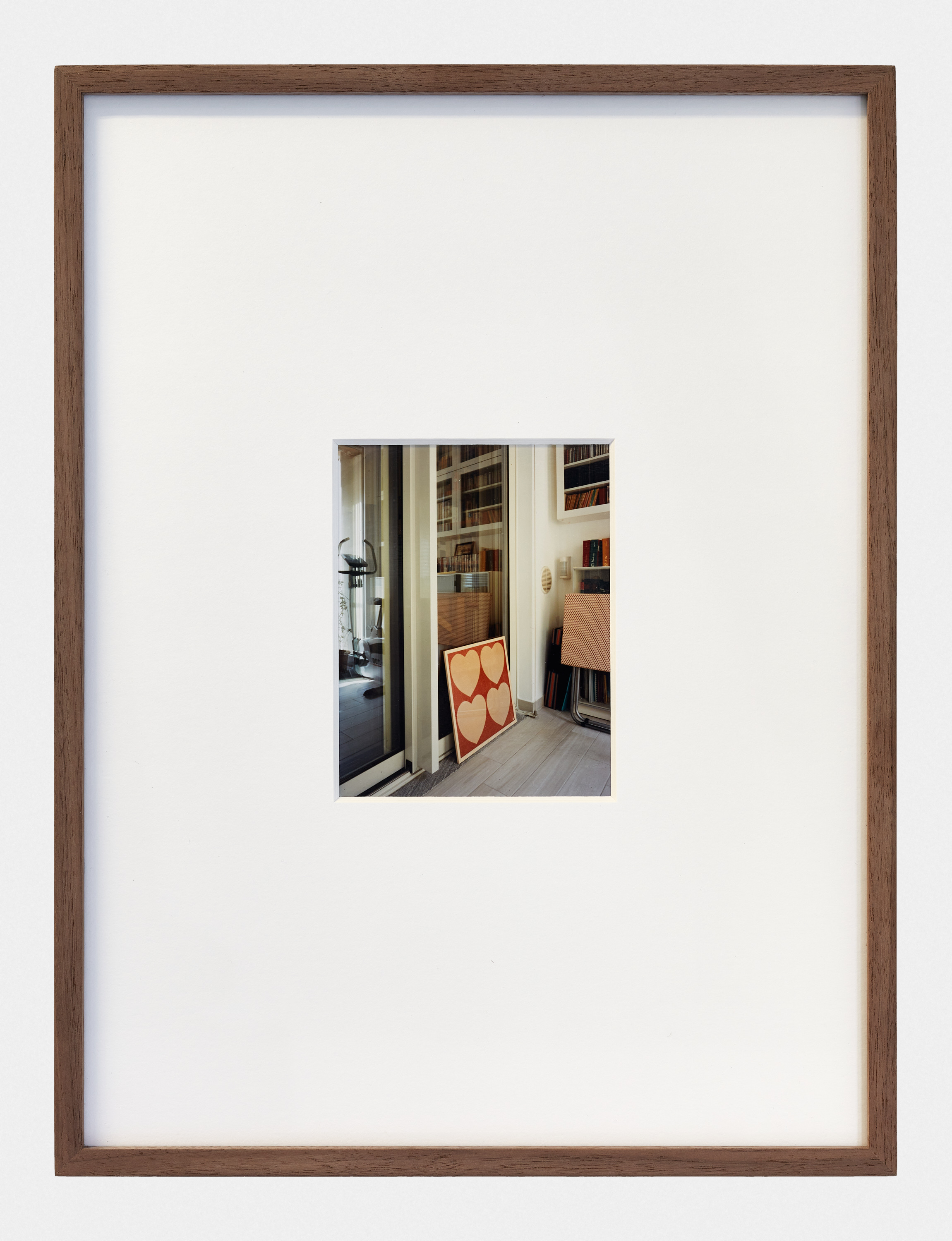

letter, 27x36x3cm (framed)
This letter, received in 2020, refers to an episode that occurred seven years earlier when I had accidentally stumbled upon one of Scientology’s Milan offices. Dianetics, the multi-volume work of Ron L. Hubbard, theorizes the possibility of a radical renewal, a “spiritual path” to the ultimate resolution of ills, of body as well as mind, based on dissociation from one’s traumas. I bought a volume of Hubbard’s work. Perhaps something had seduced me, or perhaps, simply, I thought, I don’t believe in all this, but I might still find something useful in it.
This episode, reoccurring years later in the form of a letter, awakened in me a sense of embarrassment. I had not thought about Scientology for a long time, in fact I stopped thinking about it as early as a week after I bought Dianetics. And yet, the literalness of the question stated in the letter continues to fascinate me - dear Paolo, what were you trying to improve?
Exhibitions:
Cuore (solo), 2023, MarktStudio, Bologna
Ph. Carlo Favero
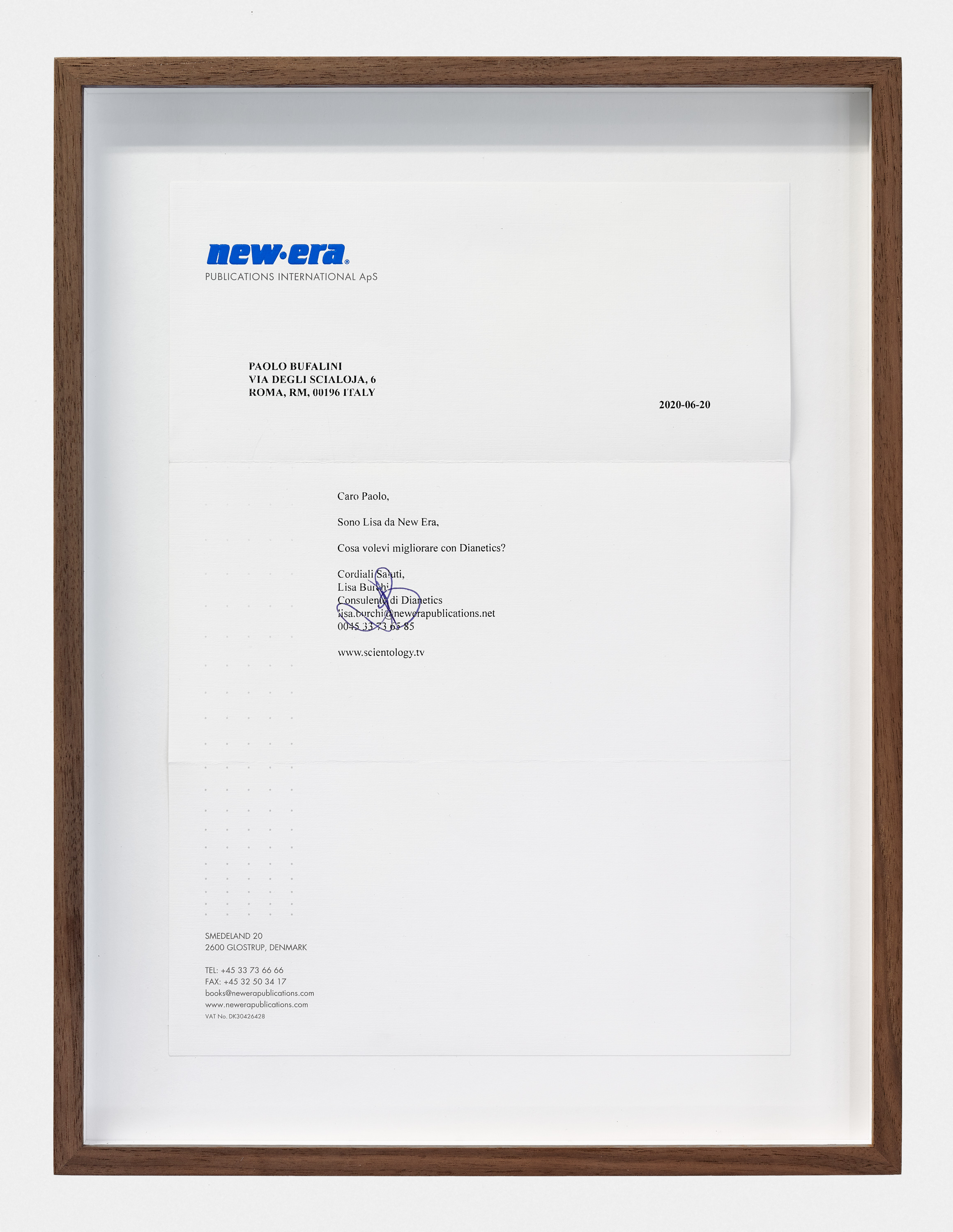
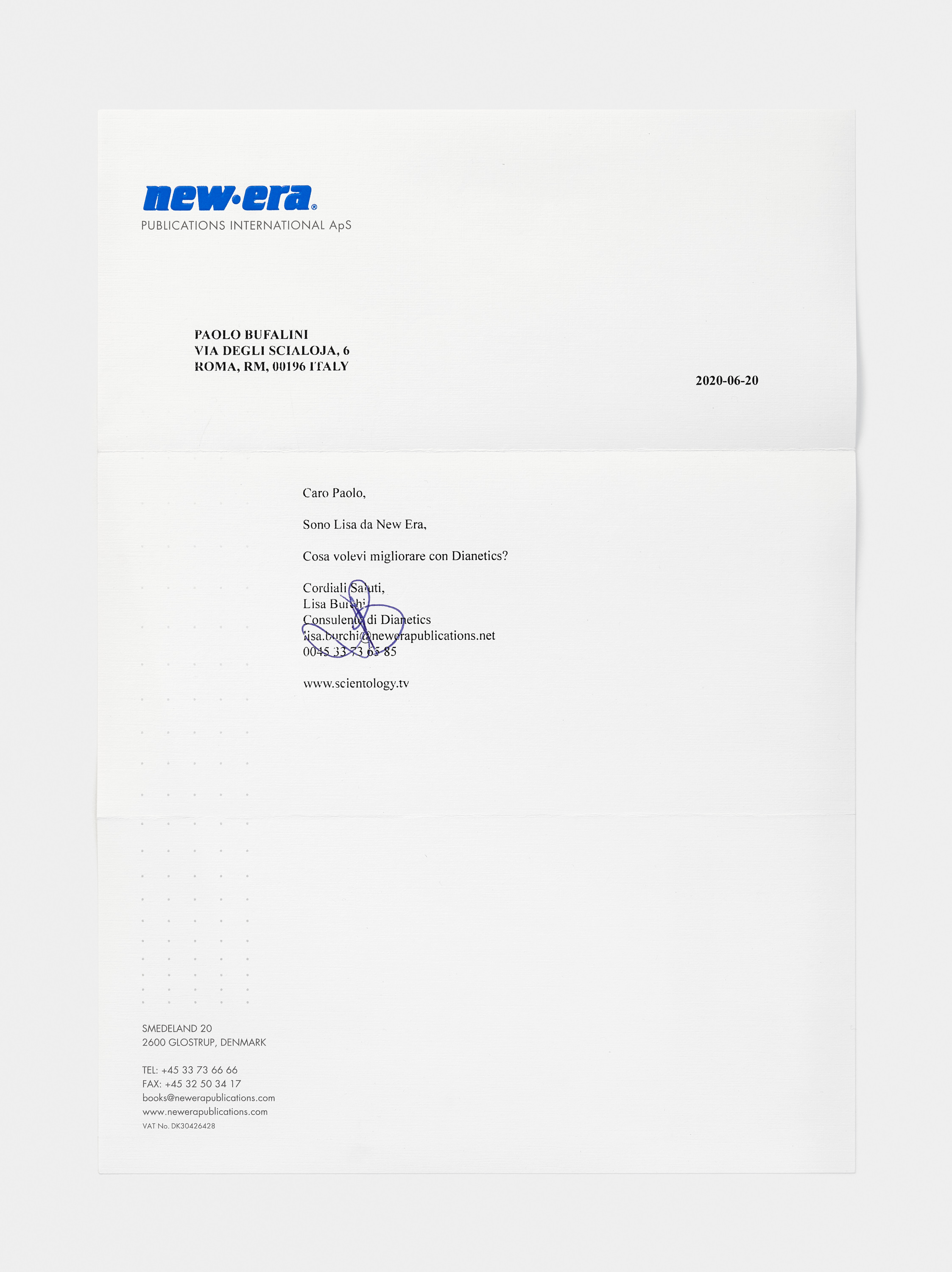
fruits is a cycle of ephemeral works made by tattooing trauma and words to exorcise on apples and pears. During the exhibition time, apples and pears are subjected to a process of organic degradation, thus accomplishing what could be called a sublimation - of the trauma, as well as of the body on which it is inscribed. Each work takes, from time to time, its title from the sequence of tattooed words, forming a kind of litany.
Exhibitions:
2023 Castello a orologeria, Castello di Andraz (BL), curated by Dolomiti Contemporanee
2023 Data Mining, duo exhibition w/ Lorenzo Lunghi, La Rada, Locarno, curated by Tommaso Gatti & Yimei Zhang
Press:
KubaParis
Pictures:
1 Installtion view at Data Mining, 2023, La Rada, Locarno
2-3 Self-doubt, Sex-addiction, Anorexia, 2023, glass and steel table, tattooed Kanzi apples 75x34x50cm
4 Anger, Ex-boyfriend, Depression, Paranoia, 2023 glass and steel table, tattooed Kaiser pears 75x34x50cm
Ph: Tiziano Ercoli & Riccardo Giancola


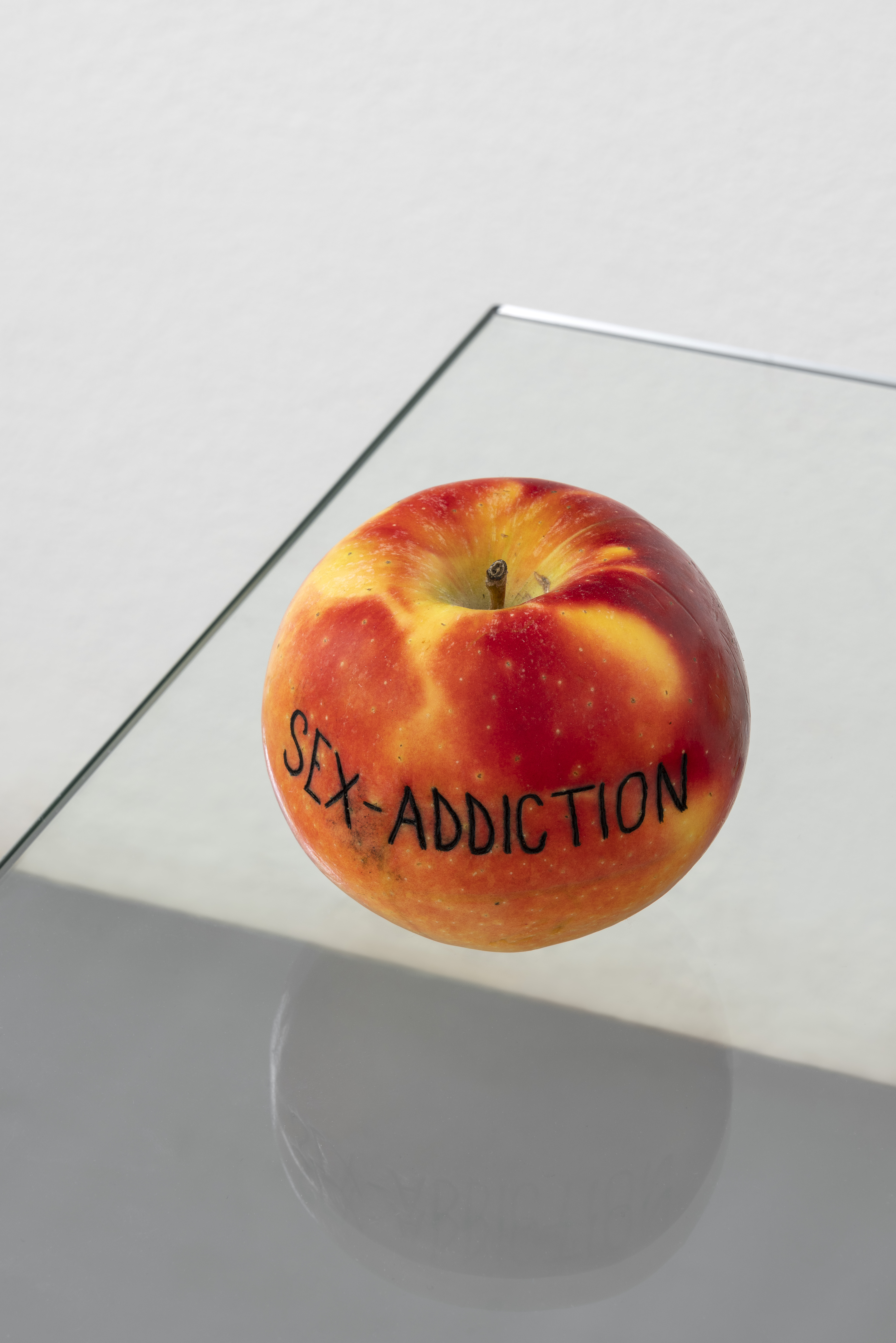

Paolo Bufalini was born in Rome (1994). Lives and works in Bologna.
Education
2024 - ogoing PHD student at Accademia di Belle Arti di Napoli
2020 Painting - Visual Arts MA, Accademia di Belle Arti di Bologna, Prof. Luca Caccioni
2017 Painting BA, Accademia di Belle Arti di Bologna, Prof. Luca Bertolo
Solo / duo exhibitions
2024 Argo, Fondazione Home movies, Bologna, curated by Sineglossa
2024 Argo, Palazzo Ducale, Genova, curated by Sineglossa
2023 Cuore, 2023, MarktStudio, Bologna
2023 Data mining (w/ Lorenzo Lunghi), La Rada, Locarno
2023 beloved, gelateria Sogni di Ghiaccio, Bologna, curated by Condylura
2022 MON viewing room, Torino, text by Walter Guadagnini
2022 Forget me not (w/ Allistair Walter), Fabbri-Schenker Projects, London
2021 eve, MASSIMO, Milano, curated by Paolo Gabriotti
2020 Martedì, Localedue, Bologna, curated by Filippo Tappi and Gabriele Tosi
2018 PALARAUM (w/ Filippo Cecconi), Raum, Bologna, curated by Xing
2018 Low, Adiacenze, Bologna
2018 Nugget (w/ Filippo Cecconi), Spazio Intolab, Napoli
2018 ù - Live Arts Week VII (w/ Filippo Cecconi), TRIPLA, Bologna, curated by Xing
2018 Bello (w/ Daniele Pulze), Dimora Artica, Milano
2017 Grande Slime (w/ Daniele Pulze), GAFF dabasso, Milano
2016 Metamorfosi, Porto dell’Arte, Bologna, curated by Irene Angenica, Davide Da Pieve
Group exhibitions
2024 Remote, NUB Project Space, Pistoia, curated by Condylura
2024 Premio Conai - Ecomondo, Rimini, curated by Spazio Taverna (Marco Bassan, Ludovico Pratesi)
2023 IMAGINA - XXVII Biennale di Gubbio, Palazzo Ducale, Gubbio, curated by Spazio Taverna (Marco Bassan, Ludovico Pratesi)
2023 Castello a orologeria, Castello di Andraz (BL), curated by Dolomiti Contemporanee
2023 La sostanza agitata, Museo di Palazzo Collicola, Spoleto, curated by Saverio Verini
2023 Premio E.ART.H., Eataly Art House, Verona, curated by Treti Galaxie
2022 emERgenze contempoRanEE (permanent), Museo della Città, Rimini, curated by Cristina Ambrosini, Claudia Collina, Giovanni Sassu
2022 Casting the Castle III, Civitella Ranieri Foundation, Umbertide (PG), curated by Saverio Verini
2022 A Paradise for the Smiling Alligators, Mura Urbiche, Lecce, curated by BeAdvisors
2021 Peng on the Beach, Circolo Tennis Italia, Bologna, curated by Xing
2020 Futuro. Arte e società dagli anni Sessanta a domani, Gallerie d’Italia, Vicenza, curated by Luca Beatrice and Walter Guadagnini
2020 Baitball (01), Palazzo San Giuseppe, Polignano a Mare (BA)
2019 Estate Autunno, State Of, Milano, curated by Irene Angenica, Giovanni Paolin, Giacomo Pigliapoco
2019 Nights: Prolog, Lapsus, Timisoara
2019 La Natura delle Cose, Museo Temporaneo Navile, Bologna, curated by Luca Caccioni
2019 Snoozin’ Gutssss, Neverneverland, Amsterdam, curated by MRZB
2019 White and black stripes and a red nose (the game), Almanac Inn, Torino, project by Davide Sgambaro
2019 Carbonio e Silicio, Liceo Crescenzi-Pacinotti, Bologna, curated by Cuoghi Corsello
2019 Homo Sapiens, DAS, Bologna, curated by Davide Da Pieve
2018 Communal Leakings, Macao, Milano, curated by MRZB
2018 Ex-Centro, Otto Gallery, Bologna, a cura di Luca Caccioni
2017 Tirarsi Fuori, P420, Bologna, curated by Lelio Aiello
2017 Playing Scenic, Pinacoteca Nazionale, Bologna, curated by Carmen Lorenzetti
2017 Savoir Faire, Current, Milano
2017 Family Matters, Gelateria Sogni di Ghiaccio
Prizes / grants
2023 Premio E.ART.H. (finalist)
2022 Mint Fund Grant - Foundation for Art and Blockchain
2022 Carapelli for Art
2020 Premio Acquisto Regione Emilia-Romagna
2020 Combat Prize
2019 Ducato Prize, Academy Art Award
Residencies / Workshops
2021 Scuola di Filosofia, ICA Milano, Felice Cimatti
2020 Nuovo Forno del Pane, MAMbo, Bologna
2019 Cesare Pietroiusti, Un certo numero di cose, MAMbo, Bologna
2019 Bocs Art, Cosenza
2017 GAFF dabasso, Milano
2014 Cesare Pietroiusti, Andrea Lanini, Dioniso, un dio liquido e molteplice, Fondazione Lac o Le Mon, San Cesario di Lecce
On paper
2024 Catalogue - Arte Circolare - Premio Conai
2023 Catalogue - IMAGINA - XXVII Biennale di Gubbio
2023 Catalogue - La sostanza agitata, viaindustriae publishing
2023 Catalogue - EmERgenze contempoRaNee. I premi acquisto della Regione Emilia-Romagna e la donazione Francesco Amante al Museo della Città di Rimini, Regione Emilia - Romagna
2023 Interview - Espoarte #121, Matteo Galbiati
2022 Interview - Artribune #68, Saverio Verini
2021 Catalogue - Live Arts Week X
2021 Interview - Inside Art #122, Eleonora Bruni
2021 Catalogue - 222 artisti emergenti su cui investire, Exibart
2021 Artist book - Condylura01
2021 Catalogue - Nuovo Forno del Pane. A logbook, Edizioni MAMbo
2020 Catalogue - Futuro. Arte e società dagli anni Sessanta a domani, Edizioni Gallerie d’Italia | Skira
2020 Catalogue - Combat Prize
2019 Catalogue - Ducato prize
2019 Catalogue - 222 artisti emergenti su cui investire, Exibart
2018 Catalogue - Live Arts Week VII
Online
2024 Review - Argo, Juliet, Giulia Gorella
2024 Review - Remote, Juliet, Serena Trinchero
2024 Review - Argo, ATP Diary, Erica Rigato
2024 Review - Argo, Exibart, Andrea Rossetti
2024 Interview - Mangrovia, Alessandra Navazio [ITA] [ENG]
2024 Studio Visit - Edoardo De Cobelli x La Quadriennale di Roma
2023 Studio Visit - Marco Scotti x La Quadriennale di Roma
2023 Essay - Phroom, Enrico Camprini
2023 Review - Land of Nod, Tropico del Cancro, Chiara Spaggiari
2023 Interview, with Condylura and Treti Galaxie - Exibart, Giulia Turconi
2023 Review - beloved, Segnonline, Benedetta Sala
2023 Review - beloved, ATP Diary, Elena Bordignon
2022 Interview - About, Francesco Di Nuzzo
2022 Interview - Artribune, Saverio Verini
2022 Studio Visit - ATP Diary, Giulia Gaibisso
2021 Review - eve, Flash Art Italia, Tommaso Gatti
2021 Review - eve, Exibart, Carmen Lorenzetti
2021 Interview - ATP Diary, Tommaso Pagani
KubaParis
Ofluxo
Tzvetnik